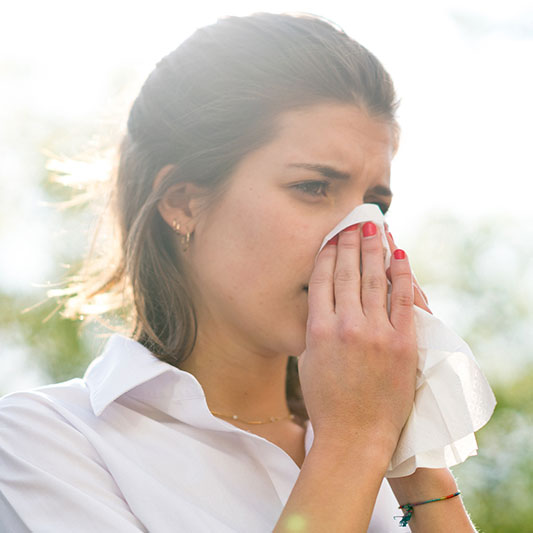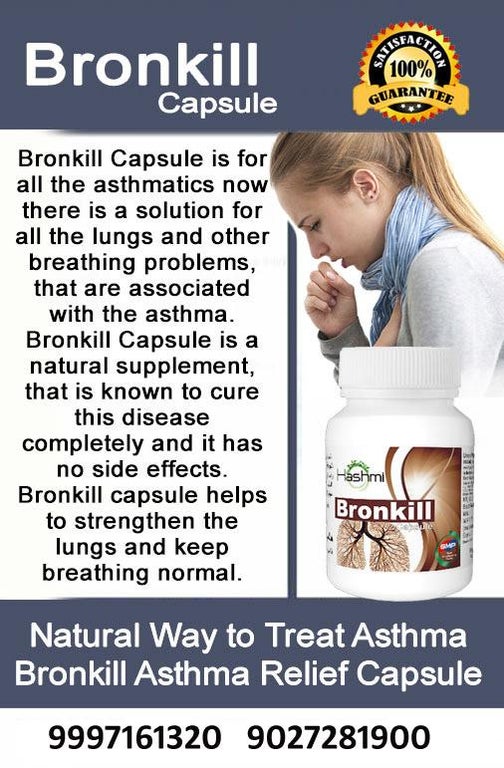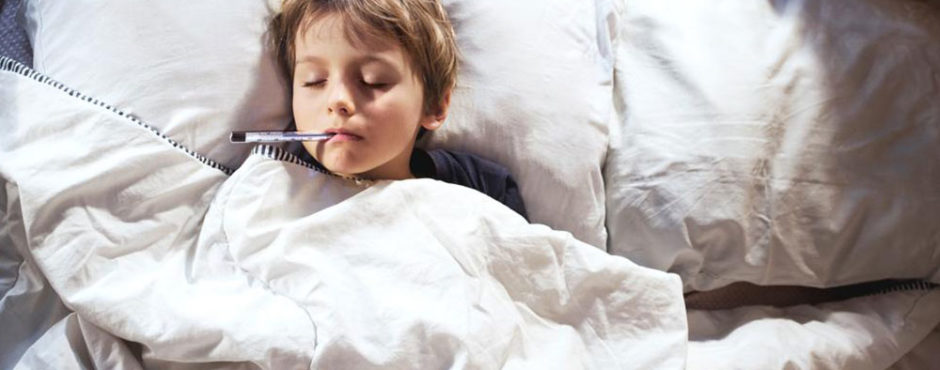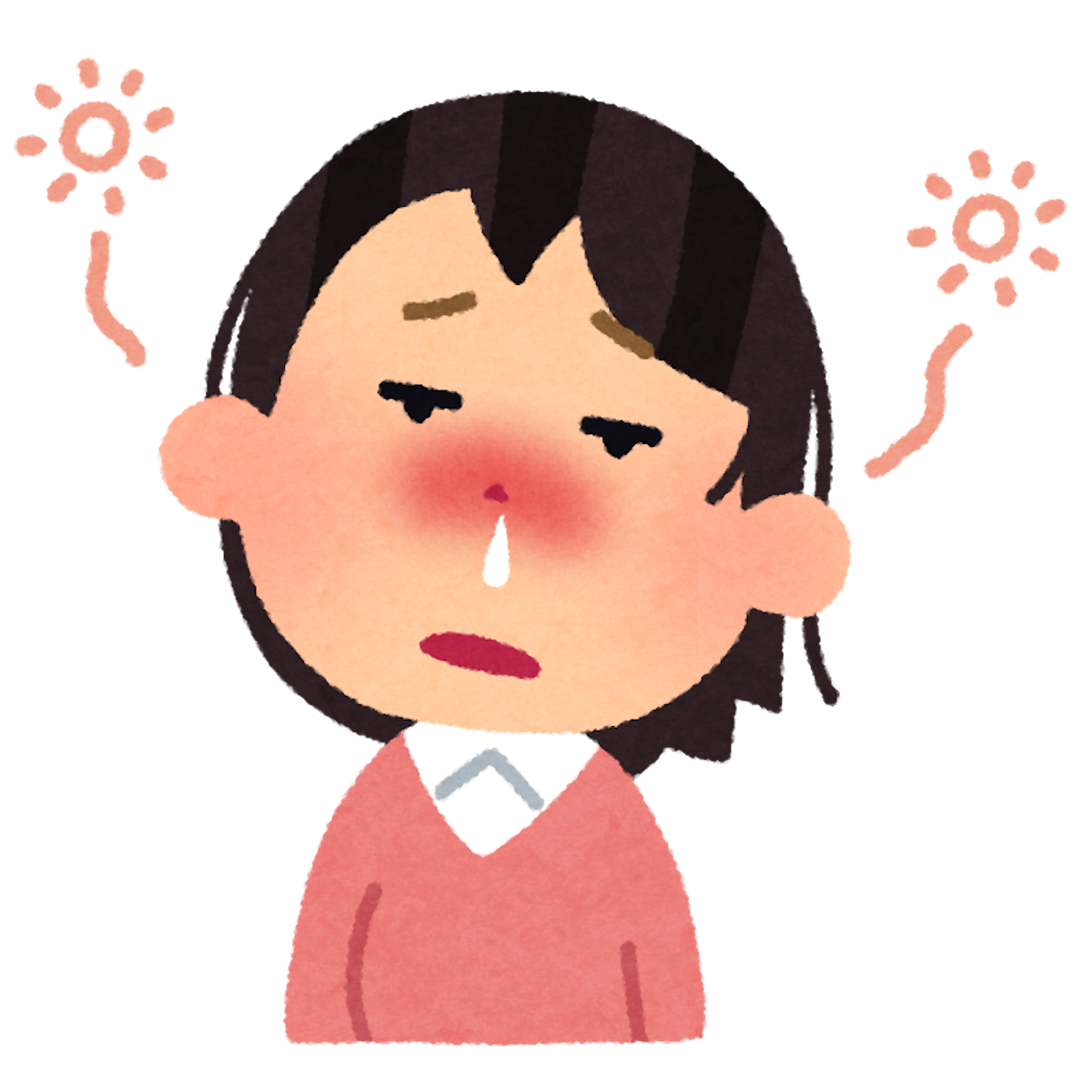Hay fever cures. Comprehensive Guide to Hay Fever: Symptoms, Treatments, and Remedies
What are the most effective treatments for hay fever. How can you manage hay fever symptoms at home. What are the potential side effects of hay fever medications. When should you consult a doctor for hay fever. How does immunotherapy work for severe hay fever cases. What are the differences between various antihistamine types. How can you prevent hay fever symptoms before they start.
Understanding Hay Fever: Causes and Symptoms
Hay fever, also known as allergic rhinitis, is a common allergic condition that affects millions of people worldwide. It occurs when the immune system overreacts to airborne substances such as pollen, leading to a range of uncomfortable symptoms. But what exactly causes hay fever, and how can you recognize its signs?
What Triggers Hay Fever?
Hay fever is primarily triggered by:
- Tree pollen (early spring)
- Grass pollen (late spring and summer)
- Weed pollen (autumn)
- Mold spores
- Dust mites
- Pet dander

Common Hay Fever Symptoms
The most frequent symptoms of hay fever include:
- Sneezing
- Runny or blocked nose
- Itchy, red, or watery eyes
- Itchy throat, mouth, nose, and ears
- Cough
- Fatigue
- Headache
Antihistamines: The First Line of Defense
Antihistamines are often the go-to treatment for hay fever symptoms. These medications work by blocking the action of histamine, a chemical released by the body during an allergic reaction. But how effective are they, and what types are available?
Types of Antihistamines
There are several types of antihistamines used to treat hay fever:
- Cetirizine
- Fexofenadine
- Loratadine
- Azelastine (nasal spray)
- Olopatadine (eye drops)
Effectiveness and Usage
Antihistamines are particularly effective at treating itching, sneezing, and watery eyes. They can be used as needed when symptoms appear or as a preventative measure before exposure to allergens. For optimal results, it’s recommended to start taking antihistamines a few weeks before the hay fever season begins.

Potential Side Effects
While newer antihistamines are less likely to cause drowsiness, some people may still experience this side effect. If drowsiness occurs, it’s crucial to avoid driving or operating heavy machinery. Other potential side effects may include dry mouth, blurred vision, and constipation.
Corticosteroid Nasal Sprays: Tackling Inflammation
Corticosteroid nasal sprays are a powerful tool in the fight against hay fever, particularly for those with persistent symptoms or a blocked nose. How do they work, and when should they be used?
Mechanism of Action
Corticosteroids work by reducing inflammation in the nasal passages, which is the root cause of many hay fever symptoms. This anti-inflammatory effect can provide relief from sneezing, congestion, and itchy, watery eyes.
When to Use Corticosteroid Nasal Sprays
Your doctor may prescribe corticosteroid nasal sprays if:
- Antihistamines haven’t been effective
- Your primary symptom is nasal congestion
- You’re pregnant or breastfeeding

Proper Application and Potential Side Effects
It’s crucial to follow the instructions provided with your medication. Incorrect application can increase the risk of side effects, which may include:
- Nasal irritation and dryness
- Nosebleeds
- Unpleasant taste in the mouth
- Skin rash around the nose
Nasal Decongestants: Quick Relief for Blocked Noses
Nasal decongestants can provide rapid relief from nasal congestion, a common and frustrating symptom of hay fever. But how do they work, and what precautions should you take when using them?
How Nasal Decongestants Work
Decongestants reduce swelling in the blood vessels of your nose, which opens up the nasal passages and makes breathing easier. They’re available as nasal sprays and can be purchased over-the-counter at pharmacies.
Usage Guidelines and Precautions
While nasal decongestants can provide quick relief, they should not be used for more than 7 consecutive days. Prolonged use can lead to:
- Rebound congestion (rhinitis medicamentosa)
- Dryness and irritation in the nasal passage
- Dependence on the medication

Eye Drops: Soothing Relief for Irritated Eyes
Hay fever often causes uncomfortable eye symptoms, including redness, itching, and excessive tearing. Eye drops can provide targeted relief for these symptoms, but how do they work, and what types are available?
Types of Eye Drops for Hay Fever
There are two main types of eye drops used for hay fever:
- Antihistamine eye drops (e.g., azelastine, olopatadine)
- Mast cell stabilizer eye drops (e.g., sodium cromoglicate)
Effectiveness and Proper Use
Both types of eye drops can effectively reduce eye inflammation and relieve symptoms. Mast cell stabilizers are particularly safe for long-term use. Always follow the instructions provided and consult your pharmacist or doctor if you experience any side effects, such as stinging or burning sensations in your eyes.
Immunotherapy: A Long-Term Solution for Severe Cases
For individuals with persistent hay fever symptoms that don’t respond to standard treatments, immunotherapy may be recommended. But what is immunotherapy, and how does it work?

What is Immunotherapy?
Immunotherapy is a treatment that gradually introduces small amounts of the allergen (such as pollen) to your body, helping your immune system build tolerance over time. This can lead to long-lasting relief from hay fever symptoms.
Types of Immunotherapy
There are two main types of immunotherapy for hay fever:
- Subcutaneous immunotherapy (SCIT): Involves regular injections of the allergen extract
- Sublingual immunotherapy (SLIT): Involves daily doses of the allergen in tablet or drop form placed under the tongue
Effectiveness and Duration of Treatment
Immunotherapy can be highly effective for severe hay fever cases, but it requires commitment. Treatment typically lasts for 3-5 years, with improvements often seen within the first year. After completing the treatment, many patients experience long-lasting relief from their hay fever symptoms.
Lifestyle Modifications and Home Remedies
While medications play a crucial role in managing hay fever, lifestyle modifications and home remedies can also significantly reduce symptoms. What are some effective strategies you can implement at home?

Pollen Avoidance Techniques
Reducing your exposure to pollen can help minimize symptoms:
- Check pollen forecasts and stay indoors when levels are high
- Keep windows closed during peak pollen times
- Wear sunglasses and a hat when outdoors
- Shower and change clothes after being outside
- Use a HEPA filter in your home
Natural Remedies
Some natural remedies may help alleviate hay fever symptoms:
- Nasal irrigation with saline solution
- Local honey consumption (although scientific evidence is limited)
- Herbal teas like nettle or butterbur
- Acupuncture (some studies suggest potential benefits)
While these home remedies can be helpful, it’s important to consult with a healthcare professional before trying any new treatment, especially if you have severe symptoms or other health conditions.
When to Seek Medical Help
While many people can manage hay fever symptoms with over-the-counter treatments and home remedies, there are situations where professional medical advice is necessary. But when should you consult a doctor for your hay fever symptoms?
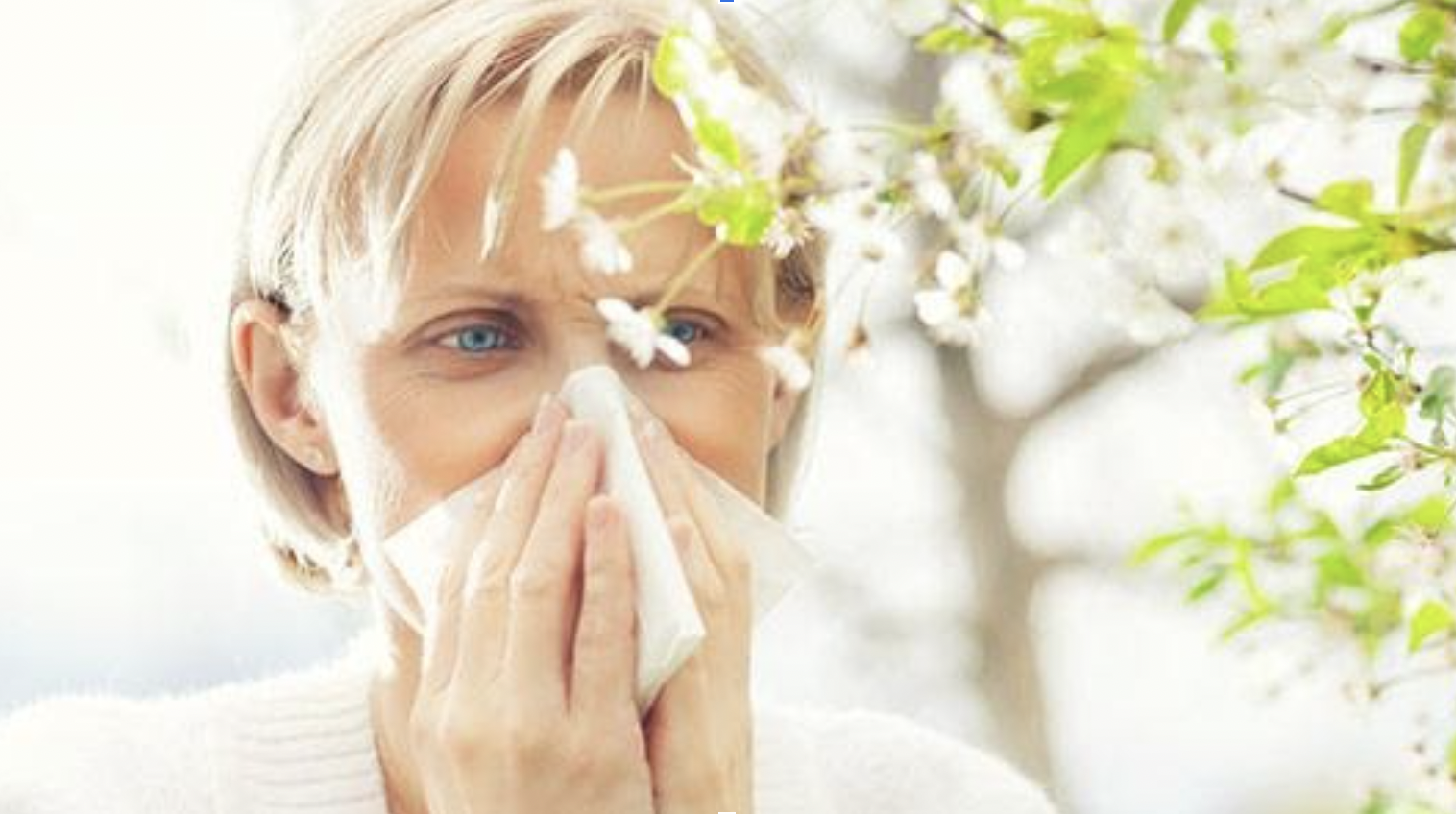
Signs You Should See a Doctor
Consider seeking medical help if:
- Your symptoms are severe or persistent despite using over-the-counter treatments
- Hay fever is significantly impacting your quality of life
- You experience side effects from hay fever medications
- You have other conditions that may complicate hay fever treatment (e.g., asthma, eczema)
- You’re pregnant or breastfeeding and need hay fever treatment
What to Expect at Your Doctor’s Appointment
When you visit your doctor for hay fever, they may:
- Review your symptoms and medical history
- Perform a physical examination
- Recommend allergy testing to identify specific triggers
- Prescribe stronger medications if needed
- Discuss the possibility of immunotherapy for severe cases
Remember, your doctor can provide personalized advice and treatment options tailored to your specific situation, ensuring you get the most effective relief from your hay fever symptoms.
Emerging Treatments and Future Prospects
The field of allergy treatment is constantly evolving, with researchers exploring new ways to manage hay fever more effectively. What are some of the promising developments on the horizon?
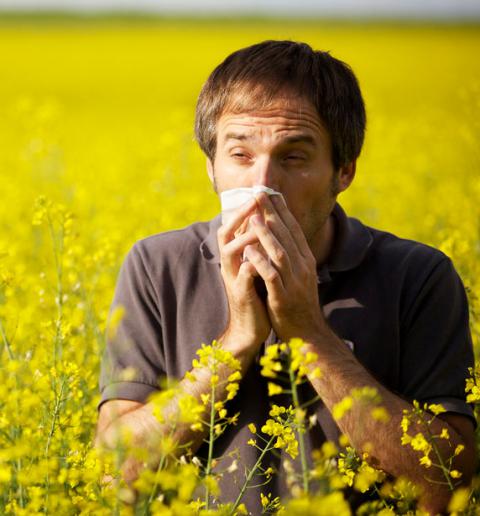
Biologics for Severe Allergic Rhinitis
Biologic therapies, such as monoclonal antibodies, are being studied for their potential in treating severe cases of hay fever. These treatments target specific molecules involved in the allergic response, potentially offering more targeted and effective relief for those with persistent symptoms.
Novel Immunotherapy Approaches
Researchers are investigating new methods of delivering immunotherapy, including:
- Intralymphatic immunotherapy: Delivering allergens directly to lymph nodes
- Epicutaneous immunotherapy: Administering allergens through skin patches
- DNA vaccines: Using genetic material to modify the immune response
These approaches aim to improve the effectiveness and convenience of immunotherapy treatments.
Probiotics and the Microbiome
There’s growing interest in the role of gut health in allergic conditions. Some studies suggest that certain probiotics may help modulate the immune system and potentially reduce allergic symptoms. While more research is needed, this area holds promise for future hay fever management strategies.

As research continues, we can expect to see more innovative treatments and management strategies for hay fever in the coming years. However, it’s important to remember that any new treatments must undergo rigorous testing and approval processes before becoming widely available.
Hay fever symptoms & treatments – Illnesses & conditions
The various treatments for hay fever are outlined below.
Antihistamines
Antihistamines treat hay fever by blocking the action of the chemical histamine, which the body releases when it thinks it’s under attack from an allergen. This stops the symptoms of the allergic reaction.
Antihistamines are usually effective at treating itching, sneezing and watery eyes, but they may not help with clearing a blocked nose.
They’re available in tablet form and also as nasal sprays and eye drops.
You can use antihistamines as:
- an “as-required” treatment – you take them when you first notice you’re developing the symptoms of hay fever
- a preventative treatment – for example, if you know there’s going to be a high pollen count, you can take them before leaving the house in the morning
Different antihistamine tablets for hay fever include cetirizine, fexofenadine and loratadine. Azelastine is an effective antihistamine nasal spray and olopatadine is an antihistamine eye drop.
Azelastine is an effective antihistamine nasal spray and olopatadine is an antihistamine eye drop.
Unlike older antihistamines, these newer types shouldn’t cause drowsiness, although this can occasionally happen to some people.
If you do become drowsy after using antihistamines, you should avoid driving or using heavy tools or machinery. You should also contact your GP or pharmacist, as there may be an alternative antihistamine you can take.
Corticosteroid nasal sprays and drops
Corticosteroids (steroids) are used to treat hay fever because they have an anti-inflammatory effect.
When pollen triggers your allergic reaction, the inside of your nose becomes inflamed. Corticosteroids can reduce the inflammation and prevent the symptoms of hay fever.
Your GP may prescribe corticosteroid nasal sprays or drops instead of antihistamines if:
- you have persistent hay fever that doesn’t respond to antihistamines
- your main symptom is a blocked nose
- you’re pregnant or breastfeeding
Corticosteroid nose drops (containing betamethasone and fluticasone) are more powerful than corticosteroid nose sprays and shouldn’t be used for prolonged periods of more than 2 to 4 weeks.
Corticosteroids are better than antihistamine tablets at preventing and relieving nasal symptoms, including sneezing and congestion. They can also relieve itchy, watery eyes. They’re most effective if you start using them a couple of weeks before your symptoms begin, and work best when used regularly.
It’s important that you read the instructions that come with your medication, as applying the drops or the spray incorrectly can increase your risk of developing side effects, such as:
- irritation and dryness of your nose
- bleeding from your nose
- unpleasant taste in your mouth
- itchy skin rash around your nose
Corticosteroid tablets
If you require rapid short-term relief from severe symptoms – for example, if you have an exam or driving test coming up – your GP may prescribe a course of corticosteroid tablets for 5 to 7 days.
The use of corticosteroids for longer than 10 days isn’t recommended, because the longer you take steroid tablets the more likely it is you’ll begin to experience unpleasant side effects, such as:
- weight gain
- changes in mood, such as feeling irritable
- acne
Nasal decongestants
Hay fever can cause a blocked nose.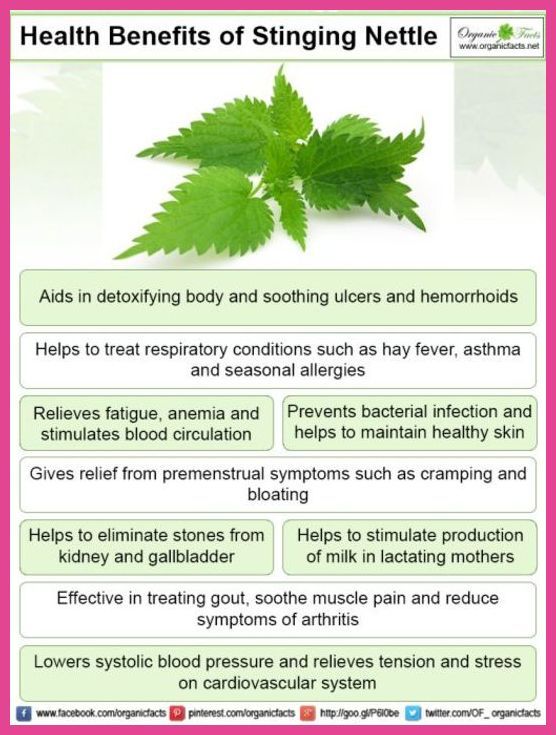 A decongestant, in the form of a nasal spray, can relieve this. Decongestants reduce the swelling of the blood vessels in your nose, which opens your nasal passage and makes breathing easier.
A decongestant, in the form of a nasal spray, can relieve this. Decongestants reduce the swelling of the blood vessels in your nose, which opens your nasal passage and makes breathing easier.
Your pharmacist can recommend a suitable nasal decongestant. Check the ingredients, as some decongestants also contain antihistamine. If they do, they may relieve other symptoms as well. If not, the decongestant will only relieve your blocked nose.
Nasal decongestants shouldn’t be used for longer than 7 days. They may cause dryness and irritation in your nasal passage, and can make the symptoms of congestion worse (this is known as rebound congestion or rhinitis medicamentosa).
Eye drops
Eye drops are available from your pharmacist to treat the hay fever symptoms that affect your eyes, such as redness, itchiness and watering (allergic conjunctivitis). The drops contain antihistamine, such as azelastine and olopatadine, to reduce the inflammation in your eyes, which will relieve the symptoms.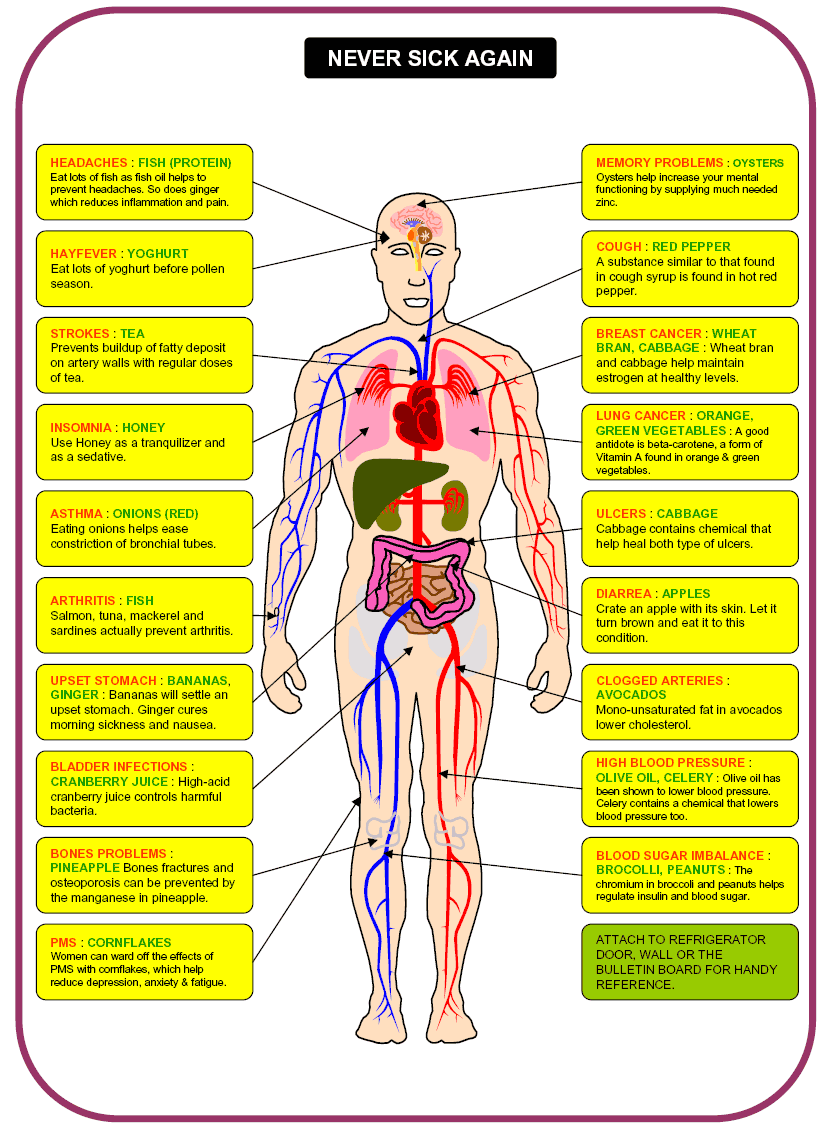
Eye drops containing the active ingredient sodium cromoglicate (a mast cell stabiliser) are the most widely used and have been shown to be extremely safe. Check the patient information leaflet for the correct way to use them. Some may cause side effects, such as a stinging or burning sensation in your eyes.
Immunotherapy
If you have persistent hay fever symptoms that aren’t relieved by the above treatments, your GP may refer you for immunotherapy treatment. This involves gradually introducing you to small amounts of the allergen (the substance you’re allergic to), such as pollen, and monitoring your allergic reaction in a controlled environment.
Immunotherapy is only carried out in specialist medical centres, in case a serious allergic reaction, known as anaphylaxis, occurs.
The allergen can be given to you as:
- an injection into your skin – this is known as systemic injection immunotherapy (SIT)
- a tablet that dissolves under your tongue – this is known as sublingual immunotherapy (SLIT)
After the initial treatment, you’ll be monitored for up to an hour.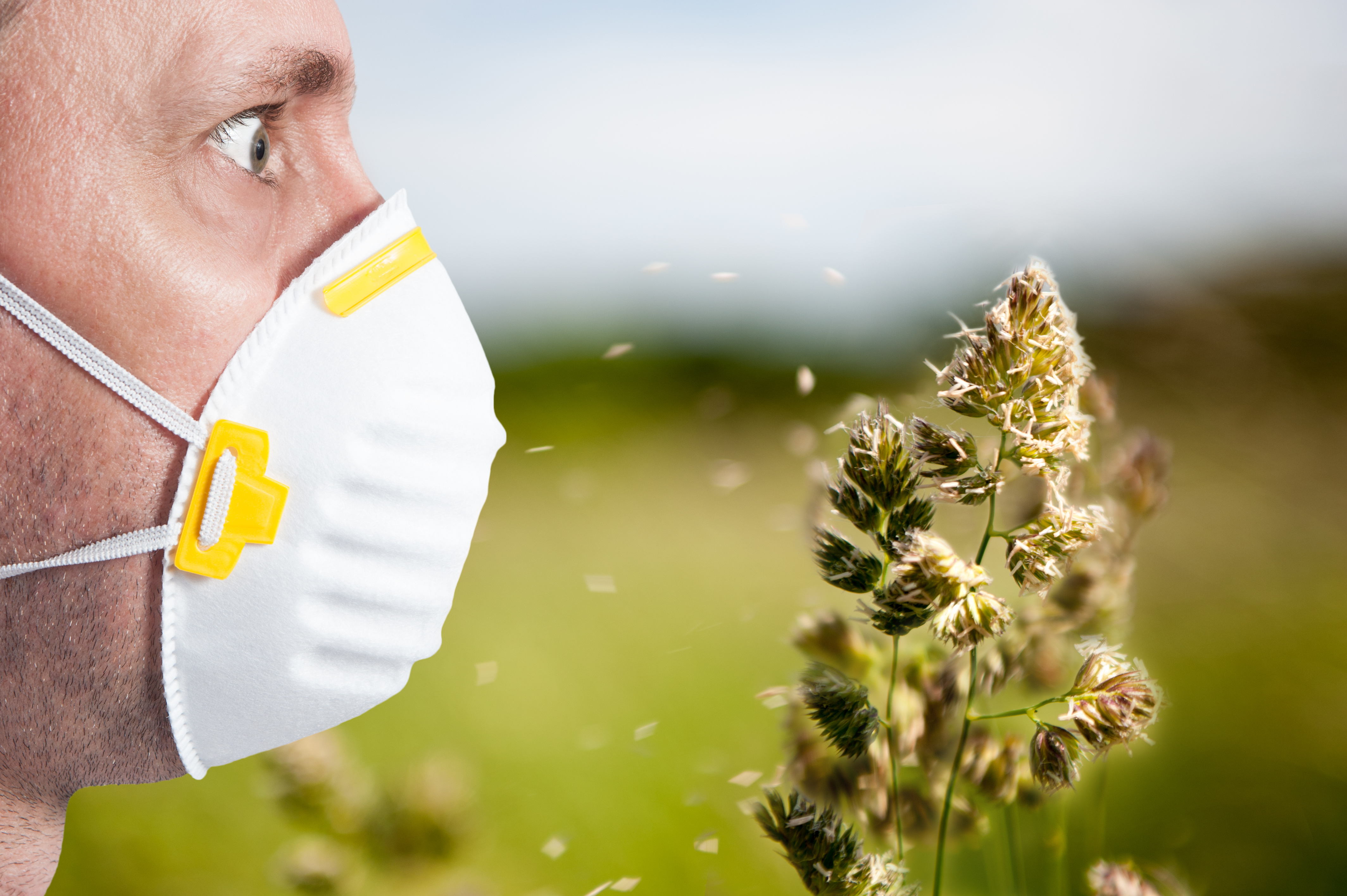
Further doses of SLIT can safely be administered at home after an initial dose has been given under medical supervision.
To work in the first year, treatment should be started 3 months before the pollen season. As you get used to the allergen, the amount used will slowly be increased. You’ll gradually start to build up immunity to the allergen, and your allergic reaction to it should get less severe. 3 years of treatment is recommended to achieve long-term pollen desensitisation.
Immunotherapy can improve your tolerance of the allergen, which can improve your quality of life and have long-term results. However, if you don’t see a significant improvement in your symptoms during the first year, then the treatment is unlikely to help and shouldn’t be continued.
Hay Fever (Rhinitis) | Symptoms & Treatment
Avoidance
The first approach in managing seasonal or perennial forms of allergic rhinitis or hay fever should be to avoid the allergens that trigger symptoms, if possible.
Outdoor exposure
- Stay indoors as much as possible when pollen counts are at their peak, usually during the midmorning and early evening (this may vary according to plant pollen), and when wind is blowing pollens around.
- Avoid using window fans that can draw pollens and molds into the house.
- Wear glasses or sunglasses when outdoors to minimize the amount of pollen getting into your eyes.
- Don’t hang clothing outdoors to dry; pollen may cling to towels and sheets.
- Try not to rub your eyes; doing so will irritate them and could make your symptoms worse.
Indoor exposure
- Keep windows closed and use air conditioning in your car and home. Make sure to keep your air conditioning unit clean.
- Reduce exposure to dust mites, especially in the bedroom. Use “mite-proof” covers for pillows, comforters and duvets, and mattresses and box springs. Wash your bedding frequently, using hot water (at least 130 degrees Fahrenheit).

- To limit exposure to mold, keep the humidity in your home low (between 30 and 50 percent) and clean your bathrooms, kitchen, and basement regularly. Use a dehumidifier, especially in the basement and in other damp, humid places, and empty and clean it often. If mold is visible, clean it with mild detergent and a 5 percent bleach solution as directed by an allergist.
- Clean floors with a damp rag or mop, rather than dry-dusting or sweeping.
Exposure to pets
- Wash your hands immediately after petting any animals; wash your clothes after visiting friends with pets.
- If you are allergic to a household pet, keep your pet out of your home as much as possible. If the pet must be inside, keep it out of your bedroom so you are not exposed to pet allergens while you sleep.
- Close the air ducts to your bedroom if you have forced-air or central heating or cooling. Replace carpeting with hardwood, tile, or linoleum, all of which are easier to keep dander-free.

Medications
Many allergens that trigger allergic rhinitis are airborne, so you can’t always avoid them. If your symptoms can’t be well-controlled by simply avoiding triggers, your allergist may recommend medications that reduce nasal congestion, sneezing, and an itchy and runny nose. They are available in many forms – oral tablets, liquid medication, nasal sprays and eyedrops. Some medications may have side effects, so discuss these treatments with your allergist so they can help you live the life you want.
Intranasal corticosteroids
Intranasal corticosteroids are the single most effective drug class for treating allergic rhinitis. They can significantly reduce nasal congestion as well as sneezing, itching and a runny nose.
Ask your allergist about whether these medications are appropriate and safe for you. These sprays are designed to avoid the side effects that may occur from steroids that are taken by mouth or injection. Take care not to spray the medication against the center portion of the nose (the nasal septum).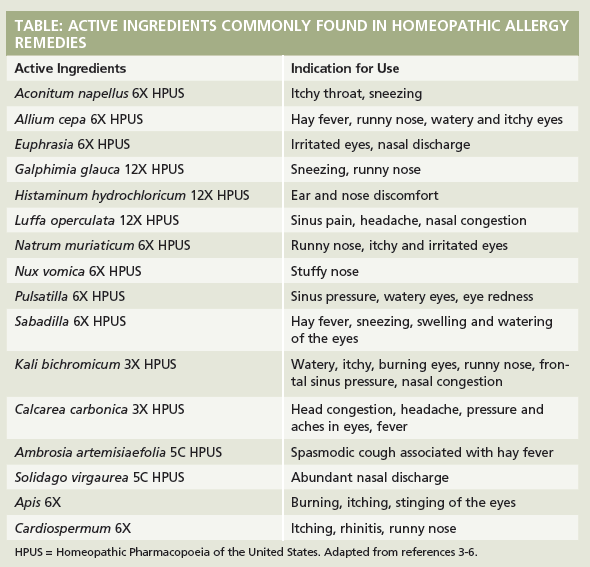 The most common side effects are local irritation and nasal bleeding. Some older preparations have been shown to have some effect on children’s growth; data about some newer steroids don’t indicate an effect on growth.
The most common side effects are local irritation and nasal bleeding. Some older preparations have been shown to have some effect on children’s growth; data about some newer steroids don’t indicate an effect on growth.
Antihistamines
Antihistamines are commonly used to treat allergic rhinitis. These medications counter the effects of histamine, the irritating chemical released within your body when an allergic reaction takes place. Although other chemicals are involved, histamine is primarily responsible for causing the symptoms. Antihistamines are found in eyedrops, nasal sprays and, most commonly, oral tablets and syrup.
Antihistamines help to relieve nasal allergy symptoms such as:
- Sneezing and an itchy, runny nose
- Eye itching, burning, tearing and redness
- Itchy skin, hives and eczema
There are dozens of antihistamines; some are available over the counter, while others require a prescription. Patients respond to them in a wide variety of ways.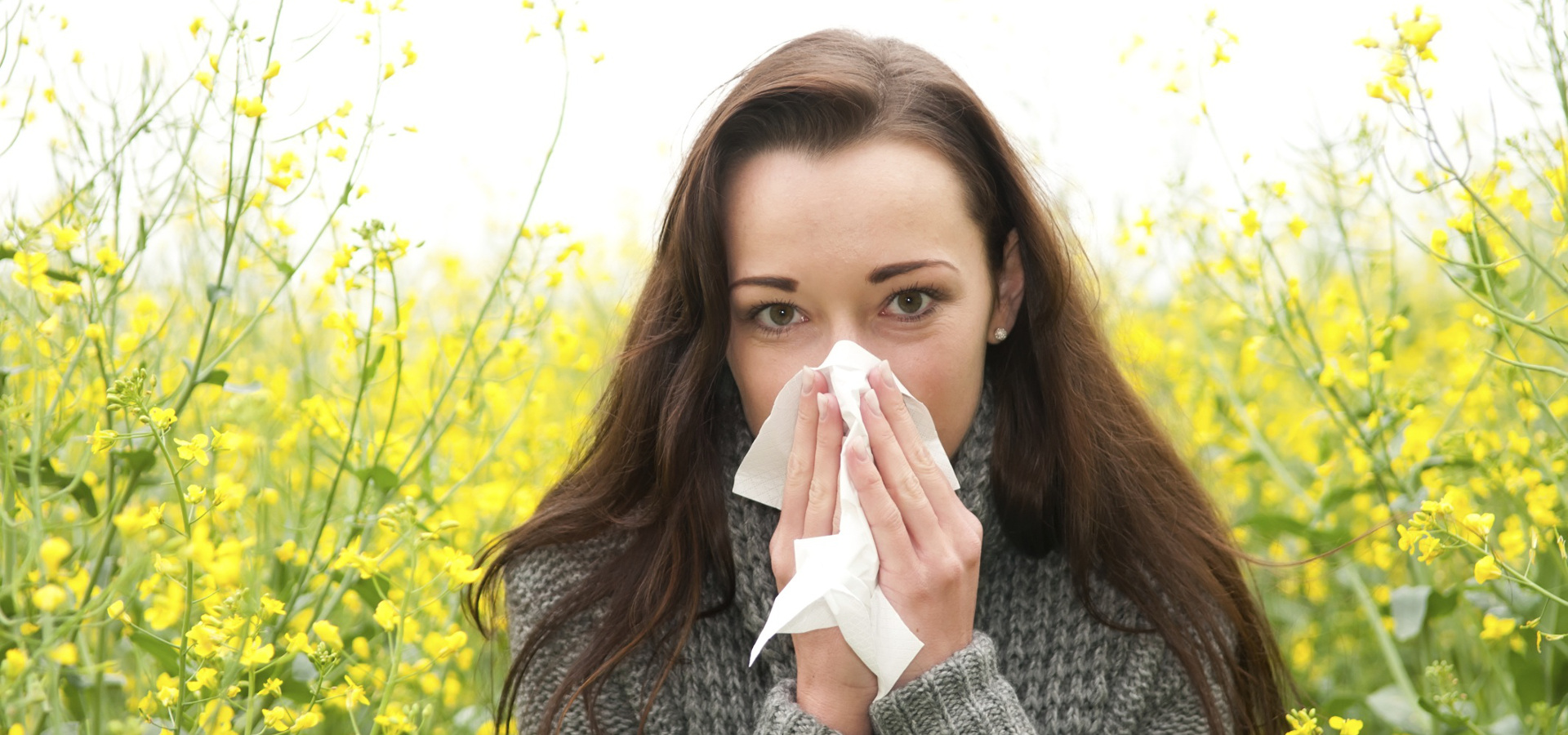
Generally, the newer (second-generation) products work well and produce only minor side effects. Some people find that an antihistamine becomes less effective as the allergy season worsens or as their allergies change over time. If you find that an antihistamine is becoming less effective, tell your allergist, who may recommend a different type or strength of antihistamine. If you have excessive nasal dryness or thick nasal mucus, consult an allergist before taking antihistamines. Contact your allergist for advice if an antihistamine causes drowsiness or other side effects.
Proper use: Short-acting antihistamines can be taken every four to six hours, while timed-release antihistamines are taken every 12 to 24 hours. The short-acting antihistamines are often most helpful if taken 30 minutes before an anticipated exposure to an allergen (such as at a picnic during ragweed season). Timed-release antihistamines are better suited to long-term use for those who need daily medications. Proper use of these drugs is just as important as their selection. The most effective way to use them is before symptoms develop. A dose taken early can eliminate the need for many later doses to reduce established symptoms. Many times, a patient will say that he or she “took one, and it didn’t work.” If the patient had taken the antihistamine regularly for three to four days to build up blood levels of the medication, it might have been effective.
Proper use of these drugs is just as important as their selection. The most effective way to use them is before symptoms develop. A dose taken early can eliminate the need for many later doses to reduce established symptoms. Many times, a patient will say that he or she “took one, and it didn’t work.” If the patient had taken the antihistamine regularly for three to four days to build up blood levels of the medication, it might have been effective.
Side effects: Older (first-generation) antihistamines may cause drowsiness or performance impairment, which can lead to accidents and personal injury. Even when these medications are taken only at bedtime, they can still cause considerable impairment the following day, even in people who do not feel drowsy. For this reason, it is important that you do not drive a car or work with dangerous machinery when you take a potentially sedating antihistamine. Some of the newer antihistamines do not cause drowsiness.
A frequent side effect is excessive dryness of the mouth, nose, and eyes. Less common side effects include restlessness, nervousness, overexcitability, insomnia, dizziness, headaches, euphoria, fainting, visual disturbances, decreased appetite, nausea, vomiting, abdominal distress, constipation, diarrhea, increased or decreased urination, urinary retention, high or low blood pressure, nightmares (especially in children), sore throat, unusual bleeding or bruising, chest tightness or palpitations. Men with prostate enlargement may encounter urinary problems while on antihistamines. Consult your allergist if these reactions occur.
Less common side effects include restlessness, nervousness, overexcitability, insomnia, dizziness, headaches, euphoria, fainting, visual disturbances, decreased appetite, nausea, vomiting, abdominal distress, constipation, diarrhea, increased or decreased urination, urinary retention, high or low blood pressure, nightmares (especially in children), sore throat, unusual bleeding or bruising, chest tightness or palpitations. Men with prostate enlargement may encounter urinary problems while on antihistamines. Consult your allergist if these reactions occur.
Important precautions:
- Follow your allergist’s instructions.
- Alcohol and tranquilizers increase the sedation side effects of antihistamines.
- Do not use more than one antihistamine at a time, unless prescribed.
- Keep these medications out of the reach of children.
- Know how the medication affects you before working with heavy machinery, driving, or doing other performance-intensive tasks; some products can slow your reaction time.

- Some antihistamines appear to be safe to take during pregnancy, but there have not been enough studies to determine the absolute safety of antihistamines in pregnancy. Again, consult your allergist or your obstetrician if you are pregnant or considering getting pregnant.
- While antihistamines have been taken safely by millions of people in the last 50 years, don’t take antihistamines before telling your allergist if you are allergic to, or intolerant of, any medicine; are pregnant or intend to become pregnant while using this medication; are breast-feeding; have glaucoma or an enlarged prostate; or are ill.
- Never take anyone else’s medication.
Decongestants
Decongestants help relieve the stuffiness and pressure caused by swollen nasal tissue. They do not contain antihistamines, so they do not cause antihistaminic side effects. They do not relieve other symptoms of allergic rhinitis. Oral decongestants are available as prescription and nonprescription medications and are often found in combination with antihistamines or other medications.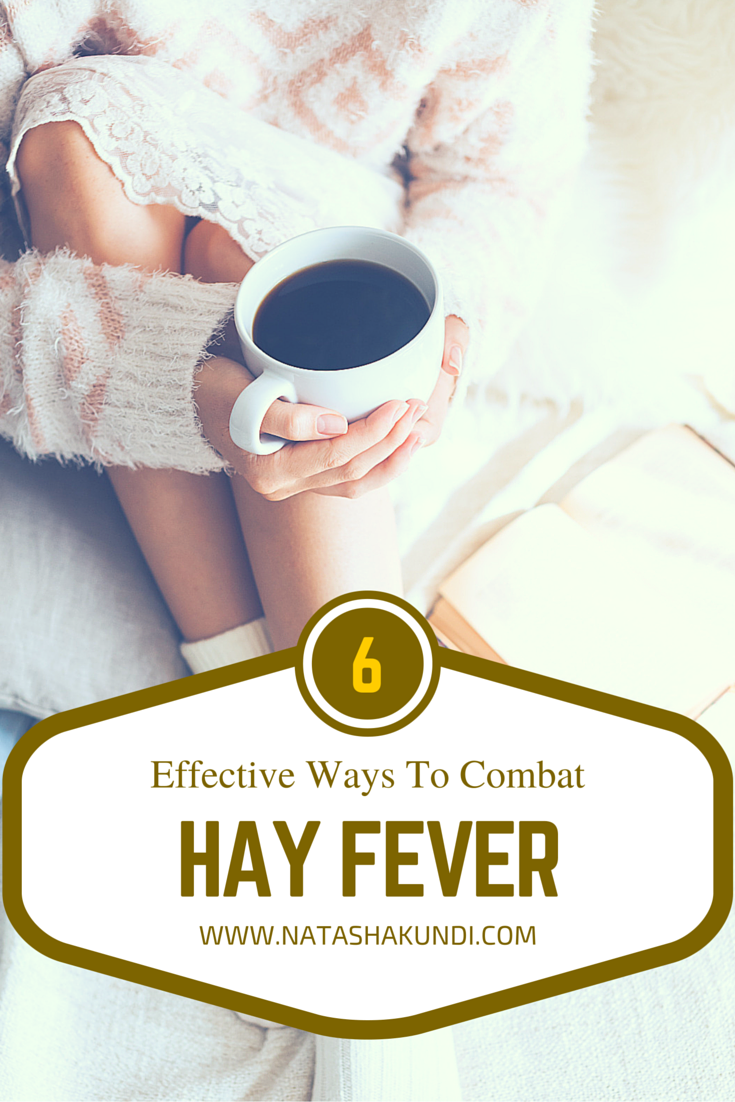 It is not uncommon for patients using decongestants to experience insomnia if they take the medication in the afternoon or evening. If this occurs, a dose reduction may be needed. At times, men with prostate enlargement may encounter urinary problems while on decongestants. Patients using medications to manage emotional or behavioral problems should discuss this with their allergist before using decongestants. Patients with high blood pressure or heart disease should check with their allergist before using. Pregnant patients should also check with their allergist before starting decongestants.
It is not uncommon for patients using decongestants to experience insomnia if they take the medication in the afternoon or evening. If this occurs, a dose reduction may be needed. At times, men with prostate enlargement may encounter urinary problems while on decongestants. Patients using medications to manage emotional or behavioral problems should discuss this with their allergist before using decongestants. Patients with high blood pressure or heart disease should check with their allergist before using. Pregnant patients should also check with their allergist before starting decongestants.
Nonprescription decongestant nasal sprays work within minutes and last for hours, but you should not use them for more than a few days at a time unless instructed by your allergist. Prolonged use can cause rhinitis medicamentosa or rebound swelling of the nasal tissue, leading to more frequent congestion and need to re-dose medication more frequently than recommended. Stopping the use of the decongestant nasal spray will cure the swelling if there is no underlying disorder.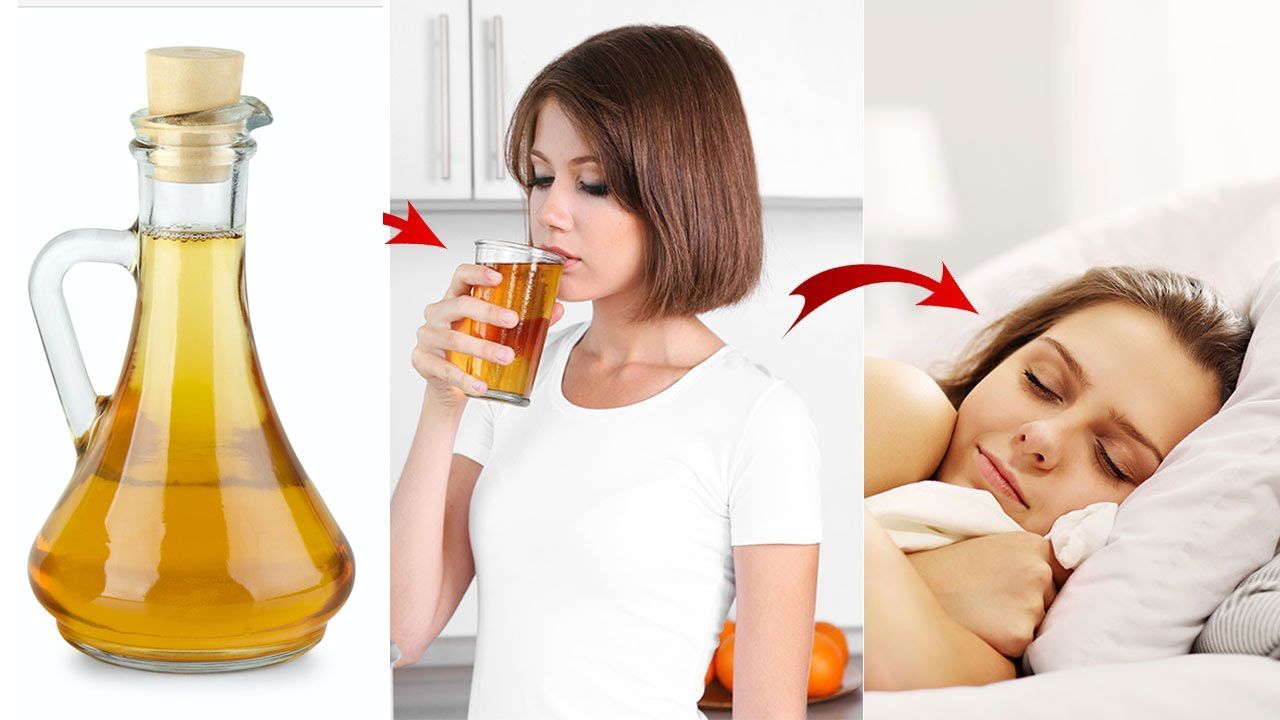
Other nasal sprays
Nonprescription saline nasal sprays will help counteract symptoms such as dry nasal passages or thick nasal mucus. Unlike decongestant nasal sprays, a saline nasal spray can be used as often as it is needed. Sometimes an allergist may recommend washing (douching) the nasal passage. There are many OTC delivery systems for saline rinses, including neti pots and saline rinse bottles.
Nasal cromolyn (Nasalcrom) blocks the body’s release of allergy-causing substances. It does not work in all patients. The full dose is four times daily, and improvement of symptoms may take several weeks. Nasal cromolyn can help prevent allergic nasal reactions if taken prior to an allergen exposure.
Nasal ipratropium bromide spray (Atrovent) can help reduce nasal drainage from allergic rhinitis or some forms of nonallergic rhinitis.
Another prescription nasal spray option is an intranasal antihistamine. These medications, such as azelastine (Astelin) or olopatadine (Patanase), are older antihistamines with some allergy cell stabilizing properties that can be used alone or with other medications including oral antihistamines and intranasal steroids. One nice feature of these medications is that they work quickly enough that they can be used as needed rather than every day. They can also help relieve nasal congestion and post nasal drainage but can cause sedation in some patients. Azelastine in particular may have an unpleasant taste.
One nice feature of these medications is that they work quickly enough that they can be used as needed rather than every day. They can also help relieve nasal congestion and post nasal drainage but can cause sedation in some patients. Azelastine in particular may have an unpleasant taste.
Leukatriene pathway inhibitors
Leukotriene pathway inhibitors (montelukast, zafirlukast and zileuton) block the action of leukotriene, a substance in the body that can cause symptoms of allergic rhinitis. These drugs are also used to treat asthma and are only available by prescription. Montelukast was recently given a warning from the FDA regarding potential behavioral changes.
Immunotherapy
Immunotherapy may be recommended for people who don’t respond well to treatment with medications or who experience side effects from medications, who have allergen exposure that is unavoidable or who desire a more permanent solution to their allergies. Immunotherapy can be very effective in controlling allergic symptoms, but it doesn’t help the symptoms produced by nonallergic rhinitis.
Two types of immunotherapy are available: allergy shots and sublingual (under-the-tongue) tablets.
- Allergy shots: A treatment program, which typically continues for three to five years, consists of injections of a diluted allergy extract, administered frequently in increasing doses until a maintenance dose is reached. Then the injection schedule is changed so that the same dose is given with longer intervals between injections. Immunotherapy helps the body build tolerance to the effects of the allergen, reduces the intensity of symptoms caused by allergen exposure and sometimes can make skin test reactions disappear. As tolerance develops over several months, symptoms should improve.
- Sublingual tablets: This type of immunotherapy was approved by the Food and Drug Administration in 2014. Starting several months before allergy season begins, patients dissolve a tablet under the tongue daily. Some patients benefit from year-round treatment.
 Treatment can continue for as long as three years. Only a few allergens (certain grass and ragweed pollens and house dust mite) can be treated now with this method, but it is a promising therapy for the future.
Treatment can continue for as long as three years. Only a few allergens (certain grass and ragweed pollens and house dust mite) can be treated now with this method, but it is a promising therapy for the future.
Eye allergy preparations and eyedrops
Eye allergy preparations may be helpful when the eyes are affected by the same allergens that trigger rhinitis, causing redness, swelling, watery eyes and itching. OTC eyedrops and oral medications are commonly used for short-term relief of some eye allergy symptoms. They may not relieve all symptoms, though, and prolonged use of some of these drops may cause your condition to worsen.
Prescription eyedrops and oral medications also are used to treat eye allergies. Prescription eyedrops provide both short- and long-term targeted relief of eye allergy symptoms.
Check with your allergist or pharmacist if you are unsure about a specific drug or formula.
Treatments that are not recommended for allergic rhinitis
- Antibiotics: Effective for the treatment of bacterial infections, antibiotics do not affect the course of uncomplicated common colds (a viral infection) and are of no benefit for noninfectious rhinitis, including allergic rhinitis.

- Nasal surgery: Surgery is not a treatment for allergic rhinitis, but it may help if patients have nasal polyps or chronic sinusitis that is not responsive to antibiotics or nasal steroid sprays.
Hay fever – NHS
Hay fever is usually worse between late March and September, especially when it’s warm, humid and windy. This is when the pollen count is at its highest.
Check if you have hay fever
Symptoms of hay fever include:
- sneezing and coughing
- a runny or blocked nose
- itchy, red or watery eyes
- itchy throat, mouth, nose and ears
- loss of smell
- pain around your temples and forehead
- headache
- earache
- feeling tired
If you have asthma, you might also:
- have a tight feeling in your chest
- be short of breath
- wheeze and cough
Hay fever will last for weeks or months, unlike a cold, which usually goes away after 1 to 2 weeks.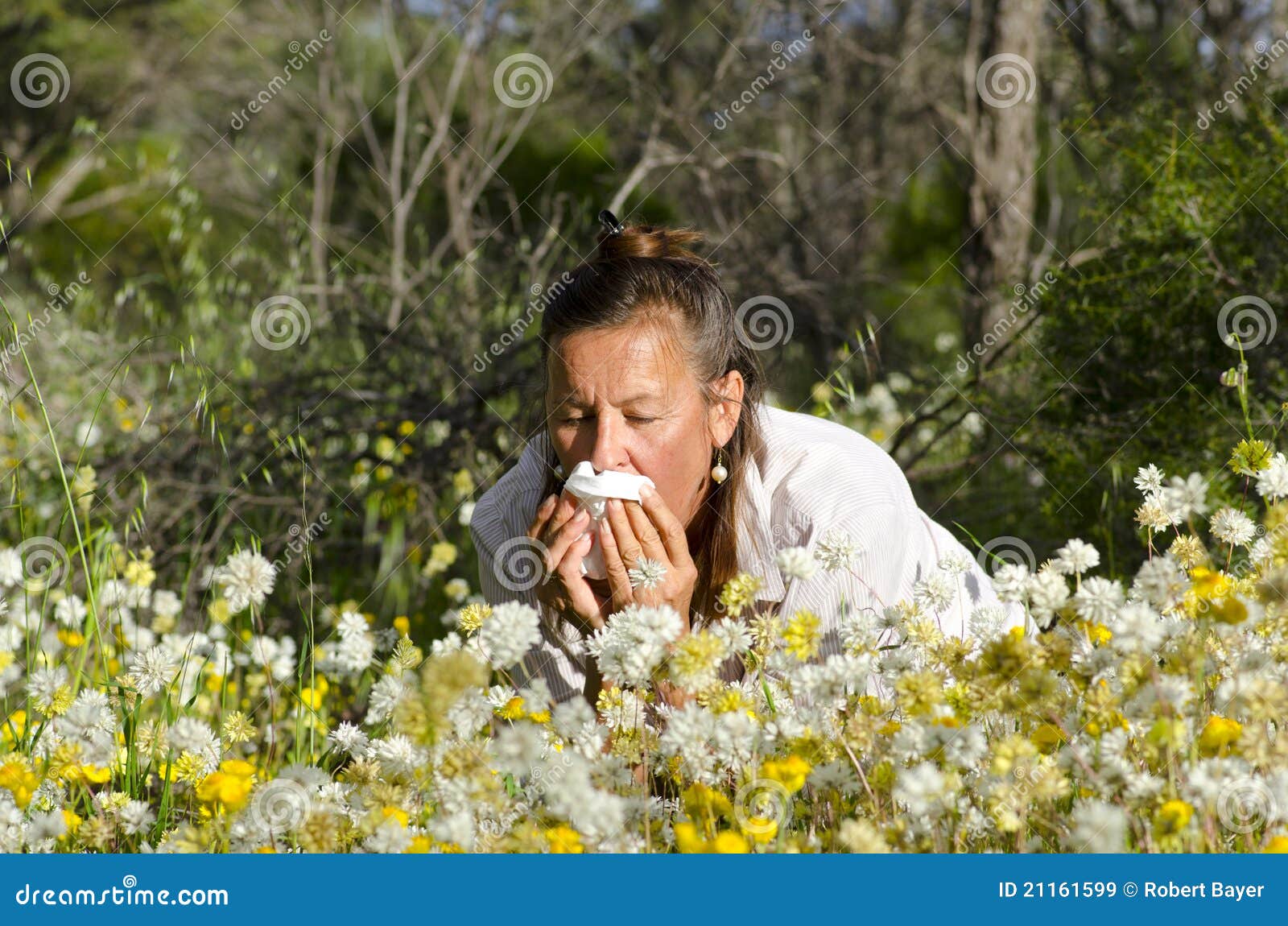
How to treat hay fever yourself
There’s currently no cure for hay fever and you cannot prevent it.
But you can do things to ease your symptoms when the pollen count is high.
Do
put Vaseline around your nostrils to trap pollen
wear wraparound sunglasses to stop pollen getting into your eyes
shower and change your clothes after you have been outside to wash pollen off
stay indoors whenever possible
keep windows and doors shut as much as possible
vacuum regularly and dust with a damp cloth
buy a pollen filter for the air vents in your car and a vacuum cleaner with a HEPA filter
Don’t
do not cut grass or walk on grass
do not spend too much time outside
do not keep fresh flowers in the house
do not smoke or be around smoke – it makes your symptoms worse
do not dry clothes outside – they can catch pollen
do not let pets into the house if possible – they can carry pollen indoors
Get more tips on managing hay fever from Allergy UK
A pharmacist can help with hay fever
Speak to your pharmacist if you have hay fever.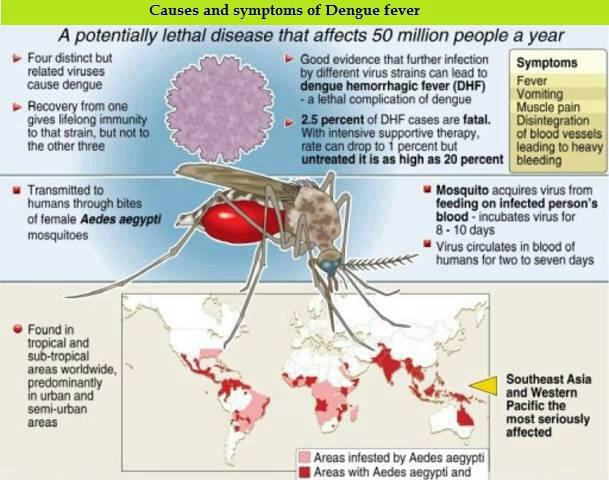
They can give advice and suggest the best treatments, like antihistamine drops, tablets or nasal sprays to help with:
- itchy and watery eyes and sneezing
- a blocked nose
Call a pharmacy or contact them online before going in person. You can get medicines delivered or ask someone to collect them.
Non-urgent advice: See a GP if:
- your symptoms are getting worse
- your symptoms do not improve after taking medicines from the pharmacy
Treatments for hay fever from a GP
Your GP might prescribe a steroid treatment, such as a steroid nasal spray.
If steroids and other hay fever treatments do not work, your GP may refer you for immunotherapy.
This means you’ll be given small amounts of pollen as an injection or tablet to slowly build up your immunity to pollen.
This kind of treatment usually starts in the winter about 3 months before the hay fever season begins.
Immunotherapy is a specialist service that may not be available everywhere.
What causes hay fever
Hay fever is an allergic reaction to pollen, typically when it comes into contact with your mouth, nose, eyes and throat. Pollen is a fine powder from plants.
Check the pollen forecast on the Met Office website
Video: hay fever advice
In this video, an expert explains how hay fever is diagnosed, as well as the symptoms and treatment.
Media last reviewed: 21 April 2020
Media review due: 21 April 2023
Page last reviewed: 04 February 2021
Next review due: 04 February 2024
Hay fever: Which medications can relieve allergic rhinitis? – InformedHealth.
 org
org
People with hay fever often have very severe, but temporary, symptoms – for example during the grass pollen season. Others are allergic to dust mites or animals and have allergy symptoms all year round. Whatever the cause of the allergy, there are medications that provide relief from allergic rhinitis. This is a set of symptoms that include sneezing, a stuffy or runny nose, and itchy or watery eyes.
Although medications for the treatment of allergic rhinitis can have side effects, they are usually well tolerated. Various medications can reduce the symptoms. You can talk with your doctor to find the most suitable one for you.
Factors that influence the choice of medication include the severity and type of allergic rhinitis (seasonal or year-round), as well as personal preferences and experiences. For instance, some people would prefer to take tablets rather than use a nasal spray. Others might feel tired when they use a certain medication, and decide to try a different one instead. The choice of allergy medication is sometimes also influenced by other medical conditions people have.
The choice of allergy medication is sometimes also influenced by other medical conditions people have.
What medications are available?
If someone has allergic rhinitis, the following medications are typically considered:
Antihistamines
Steroids (corticosteroids)
Leukotriene receptor antagonists
Chromones (mast cell stabilizers)
Decongestant nasal drops and sprays
Steroid sprays or newer generation antihistamines are usually the treatments of first choice. Many antihistamines and some steroid sprays are available from pharmacies without a prescription. Higher-dose steroid sprays have to be prescribed by a doctor, though.
Antihistamines
If something triggers an allergic reaction in your body, your immune system releases a chemical messenger called histamine. Histamine causes allergy symptoms like sneezing, watery eyes and rashes. Antihistamines suppress this effect. When treating allergic rhinitis, antihistamines can be used in the form of tablets or nasal sprays.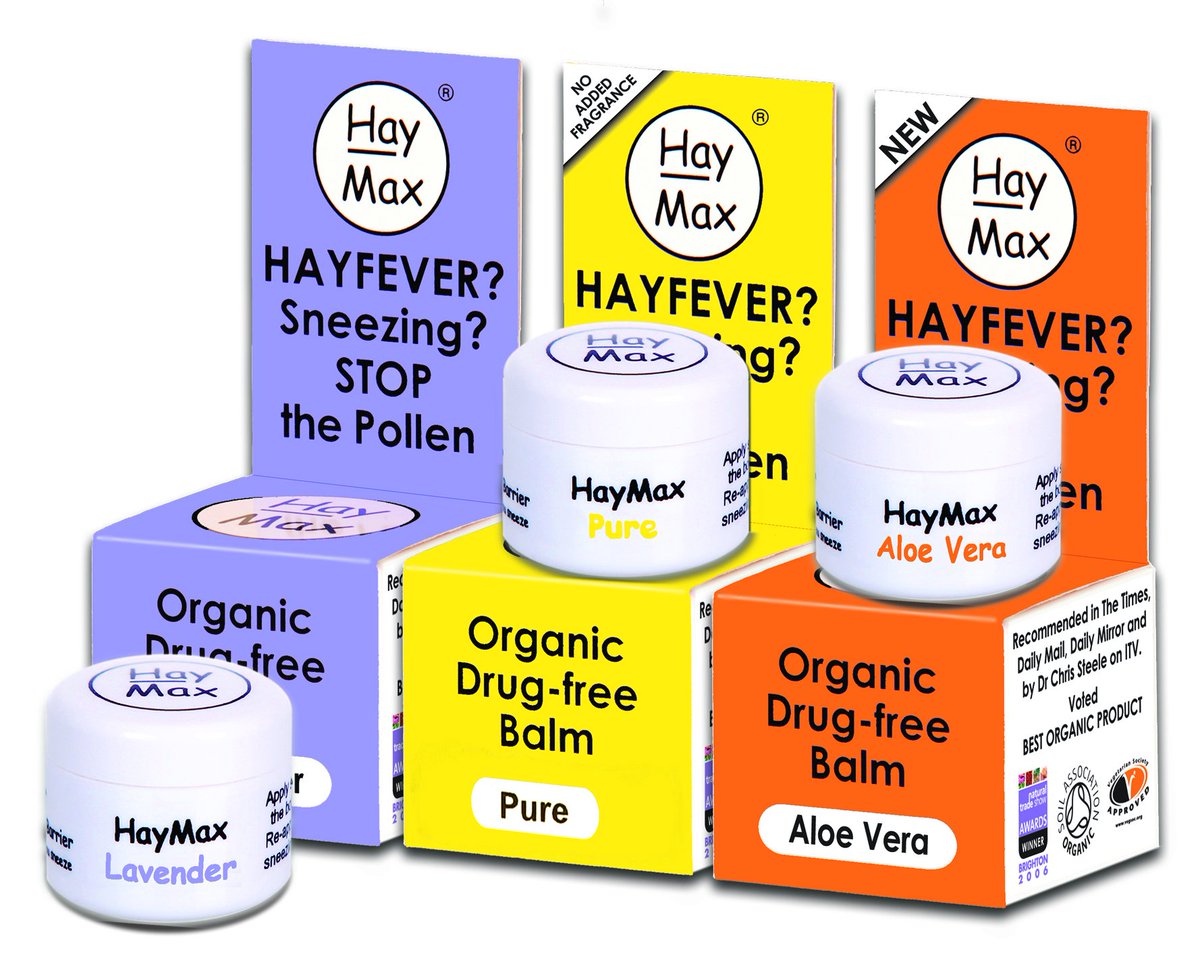 Tablets start working within one hour, and nasal sprays start working within 15 minutes.
Tablets start working within one hour, and nasal sprays start working within 15 minutes.
Research has shown that tablets and nasal sprays can both provide relief. They are usually well tolerated. The most common side effects of tablets are tiredness and headaches. They can make it more difficult to drive a car and do other activities. How tired you feel may also depend on the specific medication. So it’s important to follow the instructions in the package insert and find out about the various kinds of medications beforehand. Nasal sprays can leave a bitter taste in your mouth.
Steroids (corticosteroids)
Corticosteroids are steroid drugs that contain an anti-inflammatory steroid hormone. Steroid nasal sprays reduce reduce swelling in the mucous membranes and relieve symptoms like a runny or stuffy nose. Because only a small amount of the steroid medication enters the bloodstream when you use a nasal spray, they are considered to be low-risk. They can be used over longer periods of time, but it is then advisable to see a doctor regularly for check-ups.
Although steroid nasal sprays don’t have an immediate effect, people usually notice a difference within twelve hours. The full effect is reached after a few days. They might cause mild side effects such as nosebleeds, headaches or altered taste.
Combination products
Some nasal sprays contain both an antihistamine and a steroid. This combination is more effective than a treatment with just one of the drugs. It’s a suitable option if treatment with one medication doesn’t provide enough relief from the symptoms.
Unlike many of the products that just have one drug, combination nasal sprays are prescription-only.
Leukotriene receptor antagonists
These medications block the action of leukotrienes. Leukotrienes are chemical messengers that play an important role in the inflammatory response that happens in the airways. In addition to relieving asthma symptoms, they can also relieve the symptoms caused by hay fever – but not as well as antihistamine or steroid nasal sprays do. Leukotriene receptor antagonists are usually well tolerated. Sometimes they cause temporary side effects such as tiredness or headaches.
Leukotriene receptor antagonists are usually well tolerated. Sometimes they cause temporary side effects such as tiredness or headaches.
Chromones (mast cell stabilizers)
Mast cell stabilizers prevent histamine from being released by certain cells in the body known as mast cells. This reduces allergic and inflammatory responses in the body. They are used in the form of nasal sprays, and are usually used to prevent symptoms, but they can also relieve symptoms. Possible side effects include irritation of the membranes lining the nose, and an unpleasant taste in your mouth.
Decongestant (anti-swelling) nose drops and nasal sprays
Decongestant nose drops and nasal sprays reduce swelling in the membranes lining the nose and the sinuses, making it easier to breathe through your nose. They are not suitable for the long-term treatment of allergic rhinitis, though. Although they open your nasal passages and make it easier to breathe, your nose might “get used to“ them after a short while, and then they have the opposite effect: The membranes become swollen again and it’s difficult to breathe through your nose. These medications can also cause side effects like nosebleeds. So it is recommended that these medications not be used for longer than 5 to 7 days.
These medications can also cause side effects like nosebleeds. So it is recommended that these medications not be used for longer than 5 to 7 days.
Do some medications work better than others?
Steroid nasal sprays are often recommended as the treatment of first choice. They are just as well tolerated as other medications, and they are somewhat more effective than, for instance, antihistamine tablets.
If the symptoms don’t improve enough, a different medication can be tried out instead, or two medications can be combined: for example, a steroid nasal spray and antihistamine tablets. Or you could use a nasal spray that combines both types of drugs (a steroid and an antihistamine) in one product.
Sources
IQWiG health information is written with the aim of helping
people understand the advantages and disadvantages of the main treatment options and health
care services.Because IQWiG is a German institute, some of the information provided here is specific to the
German health care system. The suitability of any of the described options in an individual
The suitability of any of the described options in an individual
case can be determined by talking to a doctor. We do not offer individual consultations.Our information is based on the results of good-quality studies. It is written by a
team of
health care professionals, scientists and editors, and reviewed by external experts. You can
find a detailed description of how our health information is produced and updated in
our methods.
Natural remedies for hay fever
Spring and summer are wonderful time of year. We’ve made it through a long and cold winter and the sun is starting to shine again (hopefully). The once bare landscape makes way for tender buds and glossy greens – an awakening for all of nature, including ourselves. For those of us who suffer with hay fever, spring and summer can symbolise a time of apprehension as we prepare for the increase in pollen.
Why (oh why) does hay fever occur?
Hay fever is often seen as a reflection of the change in seasons that occurs during the transition from winter through to spring. As the warmth of spring increases, it also warms the body influencing a ‘melting’ of congestion and toxic accumulation that has occurred over the winter period. Hay fever is an allergic reaction (an immune system overreaction) to pollen released primarily by grasses, but can also be triggered by pollen released from trees.
As the warmth of spring increases, it also warms the body influencing a ‘melting’ of congestion and toxic accumulation that has occurred over the winter period. Hay fever is an allergic reaction (an immune system overreaction) to pollen released primarily by grasses, but can also be triggered by pollen released from trees.
Pollen particles contain a protein that causes inflammation, irritation and swelling of the nasal passages, but can also affect the eyes and the throat. The pollen (the allergen) causes the release of a substance known as an inflammatory mediator called histamine. It is the histamine that influences the symptoms of ‘hay fever’ in the body.
The symptoms of hay fever can often be split into two categories:
- Sinus congestion, watery eyes, copious mucus, itchy nose
- Red eyes, itchy eyes, inflamed nose and mucus membranes, headache
These are a reflection of our current state of health.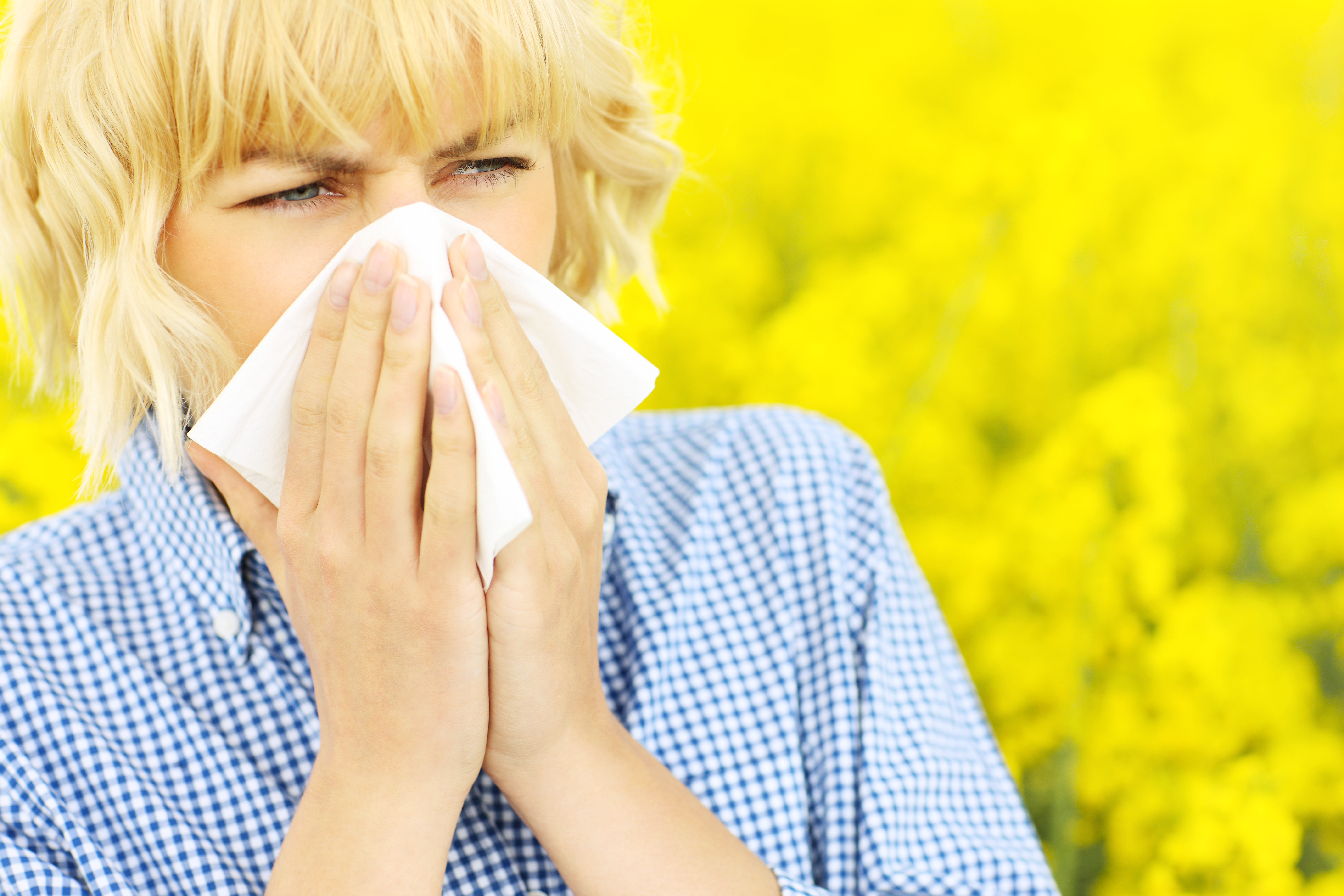 Those of us who are more prone to mucus accumulations will tend to suffer more from runny eyes and nose. Those who perhaps have a greater tendency towards hot, irritated and itching skin conditions will suffer more from itching and red eyes, ears and throat.
Those of us who are more prone to mucus accumulations will tend to suffer more from runny eyes and nose. Those who perhaps have a greater tendency towards hot, irritated and itching skin conditions will suffer more from itching and red eyes, ears and throat.
Hay fever and the doshas
Since all of us have a different dosha (or mind body type) hay fever symptoms will also differ from person to person. Ayurveda also differentiates hay fever symptoms according to a person’s dominant dosha:
- Vata types (or those with aggravated vata) are more prone to symptom wheezing, sneezing, headaches, and dryness of the mouth and throat.
- Pitta types (or those with aggravated pitta) often experience more eye irritation, with burning, inflammation and a sore throat, with the potential for fever and hives too.
- Kapha types (or those with aggravated kapha) experience more congestion, with runny noses, sinus infections, itching along with feelings of heaviness.

Since symptoms vary according to the dosha involved, following the right diet for your dosha (or dosha imbalance) can be very helpful.
Luckily, help is also at hand with some of nature’s finest remedies:
- Mushroom Gold contains beta-glucans and is a great source of vitamin D, which contributes to the normal function of the immune system.
- Turmeric & Ginger: Naturally hot, spicy and stimulating, these herbs either in combination or separately will stimulate the system, warm the digestion and improve nutrient assimilation. The combination of these two herbs is a specific remedy for allergic rhinitis, hay fever and colds.
- Triphala: A traditional Ayurvedic formulation that is particularly effective at detoxifying and cleansing a congested digestive tract. It will often work best when taken at night.

- Peppermint: An excellent herb for releasing stuck congestion and mucus around the nose and a ‘heavy head’.
- Liquorice soothes the lung and throat and acts as expectorant.
- Aloe vera: A natural cooling anti-inflammatory, soothing hot and irritated mucus membranes throughout the body. It’s a natural way of cleansing your liver and helping to reduce allergic response from the immune system. Organic Aloe Vera does not contain sodium benzoate, that is so often a causative factor in allergies.
- Cleanse tea: a delicious blend of peppermint, nettle, fennel and aloevera – all of which can provide benefits.
- Rose: Rose is a drying, cooling anti-inflammatory with an affinity for the skin and eyes. It can be taken internally as a tincture, but a spray or drop of rosewater on the face and also in the eyes can be particularly effective at relieving itching and inflammation.

Other diet and lifestyle tips to help ease hay fever symptoms
- For 3-5 days drink plenty of hot water with grated fresh ginger or honey, this will help to digest toxins and regulate digestion.
- Favour foods that are warm and nourishing but easy to digest such as soups, grains and leafy green vegetables.
- Include helpful herbs for the digestion such as cumin, coriander, ginger and fennel.
- Both vitamins C and D contribute to the normal function of the immune system, so increasing their intake can help. Good sources of vitamin C include oranges, lemons, peppers and broccoli, while good dietary sources of vitamin D include oily fish, eggs and mushrooms.
- Avoid substances which are mucus producing such as dairy products, wheat and sugar.
- Avoid cold foods such as salads and iced water. These reduce digestive capacity and can create stagnation.
Allergic rhinitis: MedlinePlus Medical Encyclopedia
LIFESTYLE AND AVOIDING ALLERGENS
The best treatment is to avoid the pollens that cause your symptoms.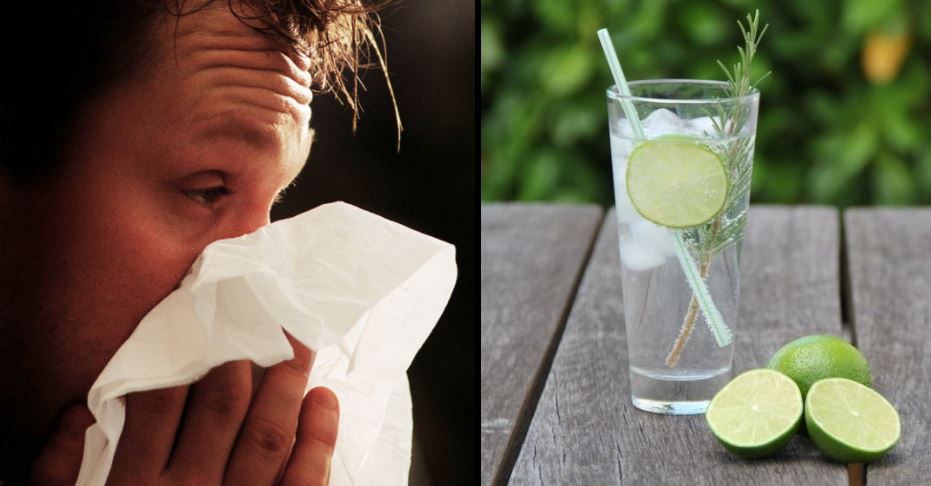 It may be impossible to avoid all pollen. But you can often take steps to reduce your exposure.
It may be impossible to avoid all pollen. But you can often take steps to reduce your exposure.
You may be prescribed medicine to treat allergic rhinitis. The medicine your doctor prescribes depends on your symptoms and how severe they are. Your age and whether you have other medical conditions, such as asthma, will also be considered.
For mild allergic rhinitis, a nasal wash can help remove mucus from the nose. You can buy a saline solution at a drug store or make one at home using 1 cup (240 milliliters) of warm water, half a teaspoon (3 grams) of salt, and pinch of baking soda.
Treatments for allergic rhinitis include:
ANTIHISTAMINES
Medicines called antihistamines work well for treating allergy symptoms. They may be used when symptoms do not happen often or do not last long. Be aware of the following:
- Many antihistamines taken by mouth can be bought without a prescription.
- Some can cause sleepiness. You should not drive or operate machines after taking this type of medicine.

- Others cause little or no sleepiness.
- Antihistamine nasal sprays work well for treating allergic rhinitis. Ask your doctor if you should try these medicines first.
CORTICOSTEROIDS
- Nasal corticosteroid sprays are the most effective treatment for allergic rhinitis.
- They work best when used nonstop, but they can also be helpful when used for shorter periods of time.
- Corticosteroid sprays are generally safe for children and adults.
- Many brands are available. You can buy four brands without a prescription. For all other brands, you will need a prescription from your doctor.
DECONGESTANTS
- Decongestants may also be helpful for reducing symptoms such as nasal stuffiness.
- Do not use nasal spray decongestants for more than 3 days.
OTHER MEDICINES
- Leukotriene inhibitors are prescription medicines that block leukotrienes. These are the chemicals the body releases in response to an allergen that also trigger symptoms.

ALLERGY SHOTS
Allergy shots (immunotherapy) are sometimes recommended if you cannot avoid the pollen and your symptoms are hard to control. This includes regular shots of the pollen you are allergic to. Each dose is slightly larger than the dose before it, until you reach the dose that helps control your symptoms. Allergy shots may help your body adjust to the pollen that is causing the reaction.
SUBLINGUAL IMMUNOTHERAPY TREATMENT (SLIT)
Instead of shots, medicine put under the tongue may help for grass and ragweed allergies.
Hay fever treatments – MyDr.com.au
Hay fever symptoms can range from being mildly irritating to being debilitating, affecting a person’s ability to go about their daily life, do sport and work. ‘Hay fever’ that peaks in the spring is known to doctors as seasonal allergic rhinitis, but it can occur all year round when it’s known as perennial allergic rhinitis.
Effective treatment of hay fever depends on avoiding your triggers and using medicines to relieve or prevent symptoms, or in some cases undergoing immunotherapy treatment to stop your body reacting to the allergen in the first place.
Many hay fever treatments are available over the counter or from your pharmacist. Your doctor and pharmacist will be able to advise you how to use hay fever treatments most effectively and which product is best to treat the symptoms you are having the most problems with. You may need more than one product to target different symptoms, for example some people find they need a nasal decongestant to relieve a blocked nose and an antihistamine to control sneezing and itchiness.
Antihistamines work fast and are good at treating mild symptoms such as sneezing and runny nose, whereas corticosteroid nasal sprays may take several days to start to have an effect, but can treat more severe symptoms and nasal blockage.
It’s important to realise that many hay fever treatments that come in the same format, such as a nasal spray, do not contain the same active ingredients or class of medicine, so are not comparable and may target different symptoms altogether. You may need to try a couple of products before you find the one(s) suitable for relieving your symptoms.
Minimising exposure to allergens
It may sound obvious, but knowing which allergens trigger your symptoms can go a long way to helping you manage your hay fever. Hay fever allergens, such as pollens, are carried on the wind so it’s not only the plant species around you that could be the problem. Common allergens that cause hay fever are grass, plant and tree pollens, and indoor allergens, such as house dust mite faeces, mould spores and animal dander.
Your doctor or an allergy specialist can help you to identify your allergens and may suggest you have skin prick testing to confirm what they are. Sometimes it may be difficult to identify just one allergen; many people have a combination of triggers.
There are many allergen avoidance techniques you can employ to minimise your exposure, such as wearing wraparound sunglasses to protect your eyes, drying laundry inside on high pollen days and showering after being outside on high pollen days. There are websites and smartphone apps for pollen counts in the major Australian cities. It is difficult to avoid some allergens though, so treating the allergy may be the best way in these cases.
More hay fever self-help avoidance measures are discussed separately.
Oral antihistamines
An antihistamine is a medicine that reduces or blocks histamine in the body. Histamine is the chemical that the body releases in response to allergens. The histamine attaches to various cells in the body causing inflammation and symptoms of an allergic reaction. Antihistamines work by blocking the histamine reaction in the body, so prevent the allergy symptoms from occurring.
Hay fever symptoms that antihistamines may relieve include itchy eyes, runny eyes, blocked nose, sneezing, runny nose and itching. Antihistamines may not be as immediately effective as decongestants at unblocking the nose.
Oral antihistamines are antihistamines that come as tablets. There are 2 types of oral antihistamines — sedating and non-sedating. Doctors generally recommend you take a non-sedating antihistamine – and even some of these can cause some drowsiness.
- Sedating antihistamines may be useful to aid sleep, but you should take care if driving or operating machinery. These products should also be used with caution in people with glaucoma or epilepsy.
- Non-sedating antihistamines can still occasionally cause drowsiness in some people, even though they are generally considered ‘non-sedating’.
| Antihistamine tablets | ||
|---|---|---|
| Ingredient | Brand names include | Sedating or non-sedating |
| cetirizine | Alzene, Zilarex, Zyrtec | Non-sedating |
| cyproheptadine | Periactin | Sedating |
| desloratadine | Aerius | Non-sedating |
| dexchlorpheniramine | Polaramine | Sedating |
| fexofenadine | Allerfexo, Telfast, Amcal Fexo, Chemist’s Own Fexo, Fexotabs, Guardian Fexo, Tefodine, Xergic, Pharmacy Action Fexorelief | Non-sedating |
| levocetirizine | Xyzal | Non-sedating |
| loratadine | Claratyne, Amcal Loratadine, Chemist’s Own loratadine, Allerdyne, Allereze, Lorano | Non-sedating |
| pheniramine | Avil | Sedating |
| promethazine | Allersoothe, Phenergan | Sedating |
Eye drops for hay fever
Hay fever can cause irritating eye symptoms such as itchy, red, runny and watery eyes. Antihistamine eye drops may help with the control of eye symptoms caused by allergy. Antihistamine eye drops should not be used longer than 6 weeks.
Mast cell stabilisers are another newer type of eye drop that can help control allergic eye symptoms. They have a direct effect on mast cells and prevent them from starting the allergic reaction in the eye. They do not provide immediate relief of allergic eye symptoms, but prevent symptoms occurring in the first place, when used correctly. It may take 3-7 days for them to show an effect.
There are some eye drops that combine an antihistamine with a mast cell stabiliser.
Always check the instructions for whether you should remove your contact lenses before applying eye drops.
| Some eye drops used for allergic conjunctivitis | ||
|---|---|---|
| Ingredient | Brand names include | Type of anti-allergic effect |
| Antazoline + naphazoline | Albolon-A (Eye drops), Antistine-Privine (Eye drops) | Antihistamine |
| Sodium cromoglycate | Opticrom (Eye drops) | Anti-allergic, mast cell stabiliser |
| Azelastine | Eyezep (Eye drops) | Antihistamine |
| Levocabastine | Livostin Eye Drops, Zyrtec Levocabastine eye drops | Antihistamine |
| Naphazoline + pheniramine | Naphcon-A (Eye drops), Visine Allergy with Antihistamine (Eye drops) | Antihistamine |
| Lodoxamide | Lomide Eye Drops | Mast cell stabiliser |
| Olopatadine | Patanol | Antihistamine |
| Ketotifen | Zaditen (Eye drops) | Mast cell stabiliser and antihistamine |
Antihistamine nasal sprays
Antihistamine nasal sprays are available over the counter. Antihistamine nasal sprays are just as effective as antihistamine tablets, but act faster than tablets. They help with sneezing, irritation of the nose and runny noses caused by allergens such as pollen, pet dander and house dust mites, in contrast to decongestant nasal sprays, which help with a blocked nose, but not the other symptoms of hay fever. Not all products are suitable for children.
| Antihistamine nasal sprays | |
|---|---|
| Ingredient | Brand names include |
| Azelastine (antihistamine) | Azep |
| Levocabastine (antihistamine) | Livostin Nasal Spray |
Corticosteroid nasal sprays
Corticosteroid nasal sprays are useful for prevention of symptoms. They can be used at the start of the hay fever season before symptoms occur. They take a few days to work, so if you have symptoms already, you may need to take an antihistamine to start with as relief from the nasal spray may be delayed a few days. Some of these products require a prescription from your doctor.
Corticosteroid nasal sprays are the most effective treatment for allergic rhinitis (hay fever) and are used in more severe cases. They are especially effective at relieving blocked nose. Due to their mechanism of action, they should be used consistently and for at least 4 weeks in duration.
Make sure you carefully follow the instructions on how to use the spray.
Combination nasal sprays
Nasal sprays that combine an antihistamine with a corticosteroid are also available, but usually require a prescription. These offer rapid relief of symptoms as well as an anti-inflammatory effect. As these products contain a corticosteroid, which takes several days to take effect, they should be used consistently and for at least 4 weeks in duration to obtain maximum benefit.
| Combination nasal sprays | |
|---|---|
| Ingredient | Brand names include |
| azelastine (antihistamine) + fluticasone (corticosteroid) | Dymista |
Ipratropium
Ipratropium bromide nasal spray (e.g. Atrovent Nasal) can be used to treat a severe runny nose.
Decongestants
Decongestants are medicines that reduce swelling and congestion in the nasal passages, making it easier for you to breathe. Having a blocked or stuffy nose from hay fever can make it difficult to sleep and may force you to breathe through your mouth.
Decongestants work by narrowing the blood vessels in your nose, which reduces the blood flow into the nose, thus reducing swelling. They are only designed for short-term use and don’t treat the underlying cause of your hay fever.
Decongestants are usually only used after antihistamines and corticosteroid nasal sprays have failed to relieve symptoms of a congested nose.
Decongestants should not be given to children younger than 6 years – always check the instructions to see if the product is suitable before giving to a child.
Topical decongestants, such as oxymetazoline, xylometazoline and tramazoline, which come in a nasal spray, can help relieve nasal congestion. However, they should not be used for longer than 3 days, as rebound congestion can occur through extended use.
Oral decongestants such as pseudoephedrine are also only recommended for short-term use. These tablets also relieve symptoms of nasal congestion, but may cause restlessness, anxiety and insomnia, particularly in children. People with high blood pressure, heart problems, hyperthyroidism, glaucoma, urinary retention, diabetes and those taking MAOI antidepressants, should avoid oral decongestants.
| Decongestants for hay fever | ||
|---|---|---|
| Ingredient | Nasal Spray brand names | Tablets brand names |
| oxymetazoline | Chemists’ Own Decongestant Nasal Spray, Demazin 12 Hour Relief Nasal Spray, Dimetapp 12 Hour Nasal Spray, Drixine, Logicin Rapid Relief Nasal Spray, Pharmacy Action Nasal decongestant Spray, Vicks Sinex | |
| xylometazoline | FLO Xylo-POS Nasal Spray, Otrivin Nasal Spray, Otrivin Menthol, Otrivin Plus | |
| tramazoline | Spray-Tish Menthol, Spray-Tish | |
| pseudoephedrine | Sudafed, Telfast decongestant | |
Saline
Saline (sodium chloride) nasal sprays (e.g. Fess) or saline irrigation can help with some hay fever symptoms and help remove pollen and other allergens from the lining of the nose. Saline nasal sprays are available from the pharmacy. They can be used in conjunction with any other treatment for hay fever symptoms and may help keep the nasal lining clear of mucus that may block your other medications from reaching where they need to be.
Oral combination products
Combination products are available as tablets that include an antihistamine in conjunction with a decongestant such as pseudoephedrine. These products are available in the pharmacy, but are kept behind the counter and need the pharmacist to dispense them.
They may be used when a person needs the symptomatic relief of an antihistamine, in combination with a decongestant to relieve congestion in the nose.
Products containing pseudoephedrine may cause insomnia, restlessness, anxiety and other effects mentioned above. They are not suitable for people with high blood pressure and some other conditions.
| Antihistamine + decongestant | |
|---|---|
| Ingredients | Brand names include |
| Pseudoephedrine (decongestant) + fexofenadine (antihistamine) | Telfast Decongestant |
| Pseudoephedrine (decongestant) + loratadine (antihistamine) | Claratyne-D |
Leukotriene receptor antagonists
Another oral medication that can be used to treat seasonal allergic rhinitis symptoms is montelukast (e.g. brand names Singulair, Lukair). This medicine — a so-called leukotriene receptor antagonist — can also be used in the treatment of asthma. This is a prescription medicine.
Supplements
There is no evidence for supplements such as bee pollen extract, propolis and echinacea, which are sometimes promoted as helping with hay fever symptoms. In fact, they have been linked with anaphylaxis – a serious life-threatening allergic reaction in some cases.
Referral to an allergy specialist
If you are not getting relief from your symptoms after a month of treatment, your doctor may suggest you see an allergy specialist or clinical immunologist.
The specialist will take a medical history and may do skin prick tests and blood tests to help with diagnosis and treatment of your allergies.
Immunotherapy
Immunotherapy is also known as desensitisation and can achieve lasting relief from hay fever symptoms in many people. Immunotherapy involves giving a person increasing amounts of the allergen to which they are allergic, e.g. grass pollen, until the body is trained not to react to that allergen. Immunotherapy works best for people who have a strong positive in one allergen on skin prick testing. It is not usually used for those with multiple allergic triggers.
Immunotherapy has to continue for up to 3-5 years, so a person has to be committed to make it work. Immunotherapy is carried out by allergy specialists in Australia.
1. MedLine Plus. Antihistamines for allergies. https://www.nlm.nih.gov/medlineplus/ency/patientinstructions/000549.htm (accessed Feb 2016).
2. eTherapeutic Guidelines. Rhinitis (updated Feb 2015). http://online.tg.org.au/complete/desktop/index.htm (accessed Feb 2016).
3. ASCIA. Is it allergic rhinitis (hay fever)?. Updated July 2015. http://www.allergy.org.au/patients/allergic-rhinitis-hay-fever-and-sinusitis/allergic-rhinitis-or-hay-fever (accessed Feb 2016).
4. NPS Medicinewise. Nasal decongestants. Aug 2012. http://www.nps.org.au/medicines/ear-nose-mouth-and-throat/nasal-decongestants (accessed Feb 2016).
5. Australian Doctor. Management of allergic rhinitis. March 2013. http://www.australiandoctor.com.au/clinical/therapy-update/management-of-allergic-rhinitis (accessed Feb 2016).
6. NPS Medicinewise. Top 3 tips to beat hay fever. Sept 2014. http://www.nps.org.au/publications/consumer/medicinewise-living/2014/managing-hay-fever (accessed Feb 2016).
7.ASCIA. Allergic conjunctivitis. Updated July 2015. http://www.allergy.org.au/patients/allergic-rhinitis-hay-fever-and-sinusitis/allergic-conjunctivitis (accessed Feb 2016).
90,000 What is hay fever or hay fever?
Pollinosis (hay fever) is a disease caused by sensitization (sensitivity) to pollen of various plants and is characterized by inflammation of the mucous membranes, mainly of the respiratory tract and eyes.
This term was coined in 1819 by the English physician John Bostock, who every year at the same time in the summer, when he was making hay, developed similar symptoms: sneezing, runny nose, watery eyes.Hay fever is a misnomer. Firstly, with this disease, there is almost never a fever (increase in body temperature), and secondly, hay is not the only cause of such symptoms. In fact, hay fever is a common term used in everyday life for seasonal allergic rhinitis or hay fever (from the Greek Pollin – pollen).
It manifests itself:
- sneezing,
- watery nasal discharge,
- lacrimation,
- itchy,
- and sometimes with swelling of the eyes,
- unpleasant painful sensations in the mouth and throat.
The cause of allergic rhinitis is the wind-blown pollen of trees, various spikes and weeds, as well as the spores of molds present in the atmosphere at certain times of the year.
The role of pollen in the development of hay fever was finally proved by the English physician Blackley, who himself suffered from allergies. His experiments not only revealed the true cause of this disease, but also formed the basis for the development of skin and provocative tests.
Three groups of plants are known, the pollen of which causes the development of hay fever: trees, grasses and weeds.
There are similarities between the allergens of different types of pollen. Antigens are present not only in food grains, but also in other parts of plants (seeds, leaves, etc.). This is the reason for the appearance of cross food allergies and intolerance to phytopreparations in patients with pollinosis.
Some foods that cross-allergy occurs in people with hay fever:
To tree pollen: nuts (especially hazelnuts and almonds), apples, cherries, cherries, peaches, nectarines, plums, carrots, parsley, celery, tomatoes (tomatoes), kiwi, raw potatoes.
To the pollen of cereal grasses: bread, bread kvass, flour products, semolina, bran, cereal sprouts, bread crumbs, ice cream, sorbet, rolled oats and some cereals (oats, wheat, barley, etc.), corn, sorghum, sausages, coffee substitutes, malt, beer, wheat vodka, sorrel.
To weed pollen: melon, sunflower seeds, sunflower oil, halva, mayonnaise, watermelon, zucchini, eggplant, mustard, spinach, beets, absinthe, vermouth, Jerusalem artichoke, chicory, citrus fruits, honey
Skin tests or prick test are one of the most informative diagnostic tests for allergies, including hay fever.The essence of the method is that droplets containing allergens are applied to the skin of the forearm or back. Then, at the locations of the droplets, the skin is pierced in such a way that the solution with the allergen penetrates inside. In a similar study called the Scarification Test , the patient’s skin is scarified.
If the patient is allergic to any substance, then redness or swelling forms at the site of application of the allergen.The reaction develops within 15 minutes.
But it is necessary to test with pollen allergens outside the flowering season – preferably in winter. The test results are used by the doctor not only to confirm the preliminary diagnosis, but also to decide whether to conduct allergen-specific immunotherapy for a given patient.
For the treatment of hay fever, elimination therapy, drug treatment, ASIT therapy are used. Next, we will analyze what these terms mean.
- Measures of partial elimination (to reduce contact with the allergen) involve limiting walking in dry windy weather, banning trips to the countryside, wearing sunglasses outside. To prevent the ingress of plant pollen into living quarters, it is necessary to close the vents and windows with damp gauze, change clothes and take a shower with washing your hair when returning from the street. It is also necessary to follow a hypoallergenic diet that excludes foods with cross-allergenic properties.
- Medicines in this case do not cure the disease itself, but only relieve the symptoms of hay fever. Depending on the age, severity of the condition, the characteristics of the manifestation of hay fever in a particular patient, the doctor prescribes drugs for local or internal use, sometimes in combination, in order to help a person survive this period with less discomfort.
- ASIT-method or allergic immunotherapy involves injections containing allergens.The patient receives a series of injections with hostile allergens at a gradually increasing concentration. As a result, the body’s resistance to these allergens increases. To achieve a lasting effect, 3-5 courses of therapy are carried out or one course before the season. Its effect on hay fever reaches 90%. In recent years, ASIT therapy can be carried out with preparations in the form of oral solutions.
More details about ASIT therapy can be found in the article about this technique https: // www.mc21.ru/articles/allergology/3/
Pollinosis: symptoms, diagnosis, causes, treatment
Pollinosis or “hay fever” is an allergic disease with which people of all ages most often seek help from an allergist. Pollinosis occurs in humans from contact with pollen of various plants and mainly affects the mucous membranes of the eyes and respiratory tract. In nature, very many types of plant or flower pollen have a pronounced allergic activity, which in highly sensitive people, after contact with pollen, causes the appearance of a seasonal disease with a whole range of allergic reactions.But a huge number of people on earth may not experience any discomfort from contact with dusty plants. Is that from the presence of a pungent smell in a flowering plant, from which a person can sneeze a couple of times. But for people suffering from hay fever, the joy of the awakening of nature is overshadowed by the development of allergies. Many patients with symptoms of this seasonal illness completely disrupt their usual rhythm of life – they are unable to work, study, or even do their daily activities. Why is this happening?
Reasons for the development of hay fever
An allergic reaction is, first of all, the reaction of the human immune system to the ingress of a certain foreign substance (allergen) from the external environment into the human body.With hay fever, pollen of plants acts as such a substance. An ordinary person who is not exposed to its dangerous effects does not observe any immune reaction when inhaling and exhaling pollen. But the immune system of a patient with hay fever, after getting the smallest pollen, even 10 microns, into the respiratory tract or on the mucous membrane of the eyes or on the skin, turns on the system for recognizing an allergic substance as some kind of pathogenic virus or bacteria, after which it starts from this ” harmful “agent to actively defend themselves – an allergic reaction or allergic inflammation appears.Allergy to pollen can have from 1 to 15-20% of the population, depending on the climatic zone and regional characteristics. Naturally, in the north they get sick less often, and more often in the south. The periods of exacerbation of hay fever are directly related to the periods of flowering of certain plants. An allergic reaction in patients manifests itself during the flowering of alder, birch, hazel, oak, the family of cereals, wormwood, ragweed and many other plants. The symptomatology of hay fever increases in windy and dry weather due to an increase in the concentration of pollen in the air.With the onset of wet and rainy weather, the amount of pollen decreases and the severity of the disease decreases. A significant role in the development of hay fever is played by a hereditary predisposition. It is clinically proven that if both parents of a child are susceptible to allergic diseases, then the probability of an allergy in a child can reach 80%, if only one of the parents is allergic – 25-40%. In cases where parents did not have such a disease, the risk of developing allergic diseases is only 10%.
Symptoms and manifestations of hay fever
The most common manifestations are symptoms of allergic rhinitis, of which are characterized by:
– prolonged sneezing – profuse mucous discharge from the nose
– itching in the nose
– perspiration in the oropharynx
– drainage of mucus along the back of the pharynx (“postnasal flow”)
– nasal congestion
In most patients, rhinitis is combined with allergic conjunctivitis :
– redness and swelling of the mucous membranes of the eyes,
– itching of the eyelids,
– photophobia,
– lacrimation,
– “sand in the eyes”.
Another manifestation of hay fever can be pollen bronchial asthma , when it appears:
– cough,
– shortness of breath,
– “wheezing” and / or “whistling” in the chest,
– suffocation.
Slightly less often with hay fever, there are itchy rashes on the skin (urticaria) or local edema (Quincke’s edema or angioedema) , separate manifestations of atopic dermatitis.
Severity of hay fever
Depending on the symptoms, hay fever can have 90,081 mild, moderate or severe severity .
In moderate-severe and severe cases, symptoms of pollen intoxication can be observed in the form of general weakness, malaise, headache, loss of appetite. In case of inadequate treatment of pollinosis or in its severe course, complications of the disease may appear as a result of the addition of a secondary infection – purulent conjunctivitis, sinusitis, sinusitis, bronchitis, pneumonia.
In some patients, a reaction to plant pollen may be accompanied by symptoms of the development of food allergy, and its manifestations will be year-round. For example, if a patient is allergic to tree pollen, then he may develop a reaction to the fruits of trees (apples, pears, peaches, apricots, plums, nuts, etc.), as well as to raw carrots and some other types of products … This is manifested by the presence of a sore throat, discomfort in the throat, itching, swelling in the mouth and throat.
Sometimes hay fever and allergic rhinitis can be accompanied by the development of polypous rhinosinusitis. You need to know that the manifestations of seasonal allergic rhinitis, bronchial asthma are observed not only with allergies to pollen, but also to molds (mold). A huge number of microscopic mold spores appear in the air from the beginning of sporulation – from March to mid-autumn.
Thus, hay fever can also occur in the context of year-round allergic rhinitis (persistent allergic rhinitis), when allergy to pollen is combined with allergy to non-seasonal allergens.
Very often, hay fever can be hidden under the diagnoses “chronic rhinitis” or “vasomotor rhinitis” , which distracts from choosing the right treatment tactics.
Diagnosis of pollinosis
If you suspect the development of pollinosis, you must first of all seek qualified help from a therapist or allergist. It is very important to exclude the presence of diseases with a similar course. First of all, it is ARI (ARVI), acute tracheitis or bronchitis.It is important to remember that only an experienced allergist-immunologist with the help of modern diagnostic equipment can accurately diagnose and prescribe adequate treatment.
Treatment and diagnostics of hay fever at the National Medical Research Center of Otorhinolaryngology of the FMBA of Russia are successfully carried out by specialists of the Department of Allergology and Immunology. First of all, in order to diagnose “hay fever”, the allergist-immunologist conducts a thorough collection and analysis of the patient’s anamnesis, a thorough examination.If necessary, the otorhinolaryngologist performs a rhinoscopy to determine the condition of the nasal cavity, its swelling and narrowing of the nasal passages.
In our Center, a specialist allergist performs complex allergy diagnostics on patients to clarify the causal allergen. Allergy examination is carried out using the most modern diagnostic methods. Skin tests can detect the allergen within 20 minutes after the start of the test.
Skin allergy testing has proven itself well for diagnostics of household allergies (allergies to house dust, microscopic mites, library or book dust), pet allergies (epidermal allergies), food allergies .
Skin tests are a safe and highly informative examination method. It is advisable to carry out such tests without exacerbation of an allergic disease. The so-called “prick testing” is carried out at NMITS. is the most modern method of skin tests. The advantage of “prick testing” in comparison with classical scarification tests is that the skin is less traumatized with a higher specificity of the reaction (ie, a nonspecific skin reaction to the scarification effect is excluded, the probability of a “false positive” result is reduced).
The technique of the test consists in applying small drops containing various allergens to the skin of the forearm. Then a minimal superficial puncture of the skin is performed (“prick” means an injection), and then, 20 minutes after application, a visual analysis of the reaction occurred. In the presence of an allergy, a blistering reaction occurs at the site of application of the culprit allergen. The size of the blister determines the degree of reaction.
Skin testing for patients with hay fever should preferably be carried out in the autumn-winter period.It is recommended to carry out tests after stopping the use of antiallergic drugs, as while taking antihistamines, the skin becomes “blocked” and tests may show a false negative result. If necessary, the patient undergoes a blood test for the presence of allergic antibodies (immunoglobulins E, IgE) to a wide variety of allergens. This analysis can be done to patients of any age, regardless of the treatment and the phase of the disease.
Features of conducting allergic tests in children
Allergic tests are carried out for children who have reached 5 years of age.For babies under the age of five, we recommend carrying out another research method – a specific blood test for the presence of protein antibodies – specific immunoglobulins of class E, which are produced by the immune system in response to exposure to a certain type of pollen. Unlike skin tests, such a study can be carried out throughout the year, without paying attention to the intake of medications and the patient’s state of health. This study is the only allergic method for detecting hay fever in babies.
Treatment of pollinosis
Is it possible to get rid of hay fever forever? Unfortunately, currently there is still no drug that could completely cure this disease. Modern medicine also cannot change the genotype that forms the disease in the patient. But it can significantly alleviate the suffering of a patient with hay fever. In addition, there is a special method of non-drug therapy that can significantly reduce or even prevent the manifestations of the disease, prevent the progression of the disease (in particular, the transition of allergic rhinoconjunctivitis to bronchial asthma), and in some cases remove the manifestations of hay fever for many years. The correct treatment for hay fever is selected and carried out only by an allergist-immunologist .
In the Department of Allergology and Immunology of the Federal State Budgetary Institution NMITSO FMBA of Russia, the treatment of hay fever is carried out by experienced allergists-immunologists in accordance with the world standards for the treatment of allergic diseases. After a causal allergen has been identified, the patient must completely exclude or limit contact with this allergen. During the period of dusting of the specified allergen, the most radical method of treatment is to leave for another climatic zone, where this pollen does not exist (highlands, northern territories, etc.).or dusting of allergenic plants occurs at an earlier or later date. Despite the fact that this is the most effective way to avoid the manifestations of hay fever, it is not always possible to apply it in our everyday life. And then there is a need to take special antiallergic drugs during the period of manifestations of the disease. They can be both general (systemic) action – tablets, injections, and local action – nasal spray, eye drops, inhalation agents.
Allergologist-immunologist of the department makes each patient an individual prescription for taking medicinal therapeutic drugs, taking into account the patient’s age, the severity and clinical manifestations of the disease, the presence of concomitant diseases.To date, the most successful and effective way of treating hay fever, which allows not only to influence the emerging symptoms of the disease, but also to make the seasonal allergy disappear for several years, or its manifestations become minimal – this is allergen-specific (ASIT) or specific ( SIT) immunotherapy.
ASIT is the only pathogenetic method for the treatment of hay fever. ASIT allows you to change the response of the immune system to the allergen, to make sure that contact with the allergen during the dusting season does not cause an allergic reaction of the body in the patient.This is achieved by dosed administration to the patient according to a specific method of increasing concentrations of the allergen – from the lowest, initially not causing any manifestations, to high concentrations. During ASIT, a restructuring occurs in the immune system and it ceases to react painfully to an incoming allergen. This type of treatment is carried out only under the supervision of a qualified allergist-immunologist, because it is not the drug that is introduced, but the source of the disease itself.
This treatment has a lot of nuances, which can be safe and effective only in the competent hands of a specialist.To achieve a lasting effect in accordance with international standards, treatment should be carried out for 3-5 years. In this case, various techniques are used. Possibly preseasonal administration of the allergen (subcutaneously, into the arm) for several months, 2-3 injections per week; it is possible to use an allergen of a prolonged nature, which is injected less often – at the stage of dialing a dose once a week, then once a month. It is possible to carry out sublingual (sublingual) ASIT, when the patient, according to a certain scheme, drips the allergen on his own at home under the tongue, and periodically comes to the allergist-immunologist to control and correct the therapy.This method is also applicable to small patients from 5 years of age.
The ASIT method is chosen by an allergist-immunologist, taking into account the individual characteristics of each patient, i.e. based on medical indications / contraindications and which method is more convenient for the patient. Do not treat hay fever on your own, do not use advertised “magic drugs”, which at best will not bring any effect of treatment, and in the worst case can cause your body and life irreparable harm!
Prevention of pollinosis
Prevention of the development of hay fever is simple:
– if possible, during the flowering period, move to another climatic area;
– during an exacerbation, unless absolutely necessary, do not go outside, exclude country walks, especially in windy weather;
– outdoor walks only in the evening, preferably after rain or cloudy weather;
– regular wet cleaning of the apartment, moistening window screens;
– removal of carpets, carpets, soft toys from the living quarters;
– exclusion of any herbal medicine (treatment with herbal ingredients), adherence to diet, exclusion of honey and other beekeeping products, in case of allergy to tree pollen
– exclusion during the dusting season of any fruits of trees, raw carrots, in case of allergy to grass pollen
– exclusion of food grains from the diet (incl.including bread, cereals, bran, etc.), in case of allergy to compositae pollen
– unrefined sunflower oil, mayonnaise, halva, chicory, melons and gourds.
90,000 Allergies: history and discoveries
Allergic diseases can change the life of not only one individual person and his loved ones, but sometimes the fate of an entire state and even the world.
There is enough convincing evidence that Napoleon had a “hay fever” – an allergy to plant pollen.A fit of illness struck him at Waterloo, as a result he was unable to lead the battle, and it was lost. June, dusting of meadow grasses … LN Tolstoy also paid great attention to Napoleon’s cold in his novel War and Peace. “Many historians say that the Battle of Borodino was not won by the French, because Napoleon had a cold, that if he did not have a cold, then his orders before and during the battle would have been even more brilliant, and Russia would have perished, et la face du monde eut été changée.(and the face of the world would change.) ”.
In addition, in the testimonies of the Emperor’s contemporaries, it is described how Bonaparte scratches his body with his fingernails, especially the scars from bayonet wounds – it was previously assumed that this is a consequence of scabies, but now these symptoms are considered more likely signs of neurodermatitis.
However, there are also significantly earlier references to allergic conditions in historical figures from different eras. One of the first evidences preserved on the Egyptian papyri of 2540 BC describes how the Egyptian pharaoh Menes (according to other sources, Menses) suddenly died of anaphylactic shock caused by a wasp sting.We also meet the dramatic story of Britannicus, the son of the Roman emperor Claudius, who suffered from an allergy to horses. After contact with animals, he became covered with itchy rashes, and, given the fact that horses were practically everywhere then, Britannicus had to sit in his palace and practically not participate in the management of the empire.
Such cases, of course, aroused interest among scholars of all eras, and even philosophers paid attention to this, for example, the Roman philosopher Lucretius wrote: “That food for some is poison for others.”Almost all famous doctors of antiquity were interested in this unusual phenomenon – a strange reaction to familiar things around people. So, the ancient Greek physician Hippocrates paid attention to skin rashes and digestive disorders after eating a particular food and found that they occur in most cases after taking the most common foods. In one of his works, Hippocrates investigated asthma and emphasized the spastic characteristics of this disease. The famous Arab physician and scientist Avicenna (Ibn Sina), in his treatise on hygiene, describes an unusual disease caused by the consumption of certain foods, such as honey, peanut halva, and cottonseed oil.Also in his writings, he mentioned a strange “spring runny nose” during the flowering of herbs, and he suggested treating this condition with the help of mumiyo: take it inside and smear the nose. And it really helped a lot. And if we consider that essential oils contained in mountain herbs are found in mumiyo, which have undergone fermentation in the digestive tract of bats, then this can be considered a harbinger and prototype of allergen-specific immunotherapy (ASIT). Hippocrates and Avicenna, as a rule, more often observed the heirs of the noble and wealthy people of Ancient Greece, the offspring from the families of the feudal nobility of the East, and drew attention to the fact that the children of poor people (plebeians), who ate very modestly, were much less likely to suffer from this disease, because they for a long time they were breastfed – the most accessible form of food, and subsequently their diet consisted mainly of vegetables, fruits and wholemeal bread with bran.Today, these observations are confirmed by two theories of allergies: “microbiological” – a diet rich in dietary fiber (prebiotics), significantly reduces the risk of allergies in children and the occurrence of exacerbations, and “hygienic” – as the sanitary conditions of a person’s life and his hygiene habits improve, children are less exposed to microbes and parasites, this leads to insufficient stimulation of the developing immune system, which in turn leads to the body’s tendency to allergies.
And the famous Roman physician Claudius Galen (II century AD) called the state of increased sensitivity of people to the objects around them idiopathy, and this term is still used to define certain conditions, and not only of allergic origin. Also, Galen, without suspecting it, described allergic rhinitis – he was surprised that one of his friends, sniffing a rose, began to sneeze forcibly. In the 9th century, the Persian physician al-Razi (Razes) described an inflammation of the nose that was triggered by the scent of roses.The Italian physician Leonardo Botallo in 1565 described the “pink fever” that some people suffered during the blooming period of roses. Instead of enjoying the wonderful smell, the unfortunate ones suffered from a terrible cough and a runny nose. However, these flowers were accused absolutely in vain – they do not spread pollen and therefore suffered completely in vain – the real reason, as we now know, was the pollen of other plants.
However, the first clinical observations described and reported to the scientific community date back only to the early 19th century – in 1819, the English physician John Bostock was first reported about “hay fever”, who made a report on “periodic damage to the eyes and chest.”The doctor listed the clinical symptoms of his own illness: runny nose, continuous sneezing, watery eyes, headaches that recur every summer from the age of eight after being in a field next to mowed grass. The doctor thought that the ailment was somehow caused by hay, haymaking and gave the mysterious disease the name “hay fever”, renaming it “summer cold” a few years later.
In the second half of the 19th century, Charles Blackley, a British scientist who also suffered from this form of allergy, revealed the reason for such a reaction in the body – he noticed that bouquets of flowers that his children brought home from the fields caused him to sneeze and runny nose.Then he suggested that his reaction was associated with the pollen of grasses blooming in early summer. The brave doctor began to collect flowers and herbs, bring them home and conduct experiments on himself, including with pollen saved until winter – Blakely rubbed pollen into his eyes and skin (becoming the pioneer of modern allergy tests), inhaled it, fixing the result.
In Russia, a similar disease was called hay fever. Allergy got this name because the disease, it was assumed, appeared after the cows ate hay, in which a small amount of poisonous herbs came across – as a result of which milk became the cause of hay fever (fever), or allergies.Sometimes people who ate honey also developed redness of the skin with blisters, similar to stinging nettle burns. Beekeepers explained such a disease from honey by the fact that bees collected nectar from flowering poisonous plants in summer. The fact that the hay eaten was not to blame was the first to guess in Russia by the Russian doctor L. Silich. In his report “On nervous coryza, summer coryza, hay fever, Rhinitus vasomotoria” in 1889, he proved that the cause of “hay fever” is quite live and flowering plants, especially cereals.When pollen from flowers rises into the air, people accidentally inhale it, and as a result, some of them begin to sneeze, gasp and cry.
As it was said at the beginning – allergies can change the fate of a person. One such example is Vivaldi. The famous composer could have made a good spiritual career, but asthma attacks prevented him from conducting long services. He was forced to give up the clergy, and at the age of 37 he wrote his first piece of music.The world has lost a Catholic priest, but at the same time has gained a magnificent composer, conductor and virtuoso violinist.
In the last century, the study of allergy has reached a new level, and discoveries began to appear one after another. Scientists and doctors from all over the world gradually created the entire knowledge base and all the terminology that we own today. The French physician Charles Richet, conducting experiments on dogs in 1902, coined the term “anaphylactic shock”, and the German scientist Clemens von Pirke published a paper in 1906 in which he not only correctly assumed that our immune system produces antibodies, but also described in detail methods of vaccination, hypersensitivity, but, most importantly, for the first time in the world coined the term “allergy”.
Elena Vladimirovna Ishchenko, allergist, immunologist of MEDSI Premium.
90,000 Latest news from the allergy front was presented at the annual symposium in San Antonio
A kiss from a dead man, a ghost of a peanut, errors in Google queries, penicillin injections and injections of your pride – scientists have told a lot about what can cause allergies and how to treat them. Well, or not to treat.
An interesting time to be allergic
This is how Rohit Katial, one of the authors of presentations at the annual symposium of allergists in San Antonio ( 2015 ACAAI Annual Scientific Meeting ), commented on modernity.These days, biologists are starting to suggest new drugs for the treatment of asthma to doctors. The medications she had been treated with in the past only mitigated the symptoms of sudden attacks or controlled the long-term course of the disease. However, only recently have scientists been able to create a drug called omalizumab, which can act on the cause of the disease at the cellular level, preventing the chain of reactions leading to inflammation of the cells, which makes it difficult for asthmatics to breathe. It is safe for adults and children over 12 years of age, but it is inconvenient to use, as it must be introduced using tubes.Scientists hope that in the coming years there will be several more drugs with a similar principle of work.
The easiest way to stay out of an intensive care unit is to stay out of it
While some scientists are inventing new drugs, others are identifying patterns in the occurrence of asthma attacks and giving advice on how to deal with the disease before these techniques enter mainstream medical practice.
For three years, scientists monitored the development of asthma in more than 10 thousand people.children and found that after the fifth seizure ended in the emergency room, the chance of getting there again increased from 30% to 87%.
It would seem that the easiest way not to get into the intensive care unit is not to get there, that is, not to bring the disease to a state that will lead you to a hospital bed. But not everyone can implement this “brilliant” solution: the researchers explain this by the fact that people usually do not go to an allergist until the course of the disease worsens, and this does not allow to mitigate the picture of the disease and symptoms at an early stage of its development (as well as reduce cost of treatment).
“We know that when a child is treated for asthma by a therapist, their chances of being admitted to the emergency room with an attack are much lower,” explains Chitra Dinakar, author of the study. “Our goal is to manage asthma before the child is unable to breathe and must be taken to the emergency room immediately.”
If you can’t drink – so inject!
18 September 17:31
About 10% of Americans have a penicillin allergy in their medical history.Because of this, they are prescribed more expensive or dangerous drugs with severe side effects. Scientists from the American College of Allergy, Asthma and Immunology tested 15 people who showed allergy to penicillin after taking it in pill form. It turned out that intravenous administration of penicillin did not cause any allergic reaction in them, although with previous use, people developed a rash and swollen lips. “It is believed that patients taking intravenous penicillin are at greater risk, but we found no evidence for this,” said David Hahn, study leader.
Therefore, most people who are diagnosed with penicillin allergy can actually take it, only in a different form.
At the same time, people will not be at risk of developing colitis and other negative side effects and by not helping microorganisms to quickly evolve into antibiotic-resistant strains. And for people with positive test results, doctors will help you choose the right drug.
Drink, Humans, Aspirin
As with penicillin, many people who have ever shown an allergic reaction to aspirin are mistakenly classified as allergic without specific tests.After examining 5052 medical records, scientists found hypersensitivity to aspirin in only 2.5% of patients, and 34% of patients were diagnosed with an allergy or hypersensitivity to aspirin due to the presence of diseases of the gastrointestinal tract.
Scientists note that not every single reaction to a drug is unambiguously an allergy. This can be determined with the help of special tests, which must be carried out by an allergist.
Allergies are not a cause for alarm
In the case of food allergies, children face the danger of anaphylactic shock – an immediate allergic reaction, sometimes fatal.Living in constant fear and with many strict prohibitions, scientists suggested, should increase their level of anxiety and cause associated nervous disorders. However, when comparing healthy children from the control group, children with panic disorders and food allergy sufferers, the scientists found that children with food allergies are practically the same in this indicator from the control group.
Spring aggravation: to treat or not to treat?
Seasonal pollen allergies, called hay fever (scientifically known as hay fever), are common.According to one of the reports given at the annual meeting of the American College of Allergy, Asthma and Immunology, people often begin to treat the symptoms of this disease without a medical indication, and they are not satisfied with the treatment results.
Scientists surveyed 500 adults and 501 children aged 12 to 17 with hay fever.
62% of them were able to get rid of unpleasant symptoms using drugs not prescribed by doctors, but less than a third of people were completely satisfied with the treatment.Among those who followed the doctor’s prescription, the number of those who are satisfied with the result is 50%.
From this, an obvious conclusion can be drawn, which, perhaps, will hit especially self-confident patients on their vanity: usually doctors still know better what to do (at least in the case of pollen allergy, this has now been proven).
Google Allergy No Counselor
While studying food allergy searches, researchers from the same ACAAI noticed that people often make mistakes when formulating them. When looking for information about peanut allergy, people often search for the phrase “peanut butter,” although it is not the main culprit for allergies. In addition,
unlucky patients categorize coconut allergy (even though it isn’t actually a nut) as a hazelnut allergy, and instead of “shellfish allergy” they type in the phrase “iodine allergy,” which doesn’t really exist.To avoid the pitiable mistakes associated with such misconceptions, the authors humbly recommend relying on the ACAAI site itself.
Medical detectives
Sometimes a medical history resembles a convoluted crime: sometimes doctors can only identify the “culprit” by circumstantial evidence, while the patient himself does not even suspect what could have played the role of an allergen.
Two such stories were presented at the symposium. The first is about a 48-year-old woman who complained of swollen lips and severe itching that bothered her for two weeks.As it turned out, the allergic reaction began due to the fact that
she kissed the corpse of her boyfriend at the funeral, and when she felt the first symptoms, she used lip balm with vitamin E, which only made the situation worse.
A woman was found allergic to formaldehyde used to preserve corpses and her lip balm. By eliminating these substances from her environment, she soon recovered.
The 45-year-old heroine of the second story complained of itching and dryness of the scalp, face and neck, which have not gone away for several years. It turned out that this reaction first began in her when she began to dye her hair blue, and is caused by her blue dye. The woman was instructed to avoid all products containing this substance, but, as the authors of the study admit, she did not want to change her eccentric hair color.
The ubiquitous peanut
Peanut allergy is a rather severe food allergy, and people suffering from it try in every possible way to isolate themselves from the dangerous irritant, but they do not always succeed.
Comparing the protein content of peanuts in dust from 24 homes where allergy sufferers live (50% of them said they did not have anything containing peanuts in their homes), and dust from 38 homes in the control group, the scientists found almost no difference. The only comfort is that in order to get a serious reaction, peanuts must not be inhaled, but consumed internally – to do this with dust can hardly occur to anyone.
90,000 Allergy treatment, allergen analysis Yekaterinburg, price
1. Avoiding pollen is the most reliable treatment for hay fever. However, the implementation is tricky, as the wind-flowering
pollen can fly through the air for kilometers.
There are tips for everyday life that you can implement yourself, which are listed below.
2. Specific immune therapy – this is the only method of treatment, the reasons are far away.
At the same time, in the classic version, the corresponding pollen allergen is fed in a gradually increasing dosage
in order to make him insensitive to the allergy trigger.Meanwhile,
however, supplements for drip or pill therapy can also be used – for taking at home.
3. Medication is used to relieve hay fever symptoms.
Antiallergic drugs (antihistamines) are used mainly, and for more serious allergic reactions
, anti-inflammatory cortisone drugs (eg nasal spray) are used. Sometimes so-called leukotriene receptor antagonists are also used for the
therapeutic supplement.
4. Concomitant therapy A reasonable measure is to regularly rinse the nose with a solution.
With this natural method, the need for antiallergic drugs can be reduced.
Before going to bed, take off your street clothes outside the bedroom and, if possible, wash your hair to remove any adhering pollen.
Vacuum cleaners with Hepa filtration system retain solid particles and allergenic particles.
Pollen appears more frequently from morning to noon.
Mouth and nose protection, tight-fitting sunglasses, and regular nasal showers can help.
Pollen concentration may be higher in rural areas from morning to noon, but in urban areas in the evening. Therefore,
is often given a recommendation to ventilate in the country more often in the evenings, and in the city they prefer to ventilate in the morning.
Pollen screens on windows can intercept pollen when ventilated.
But this reduces air exchange, so the ventilation time must be extended accordingly.
Keep windows closed while driving. Replace the pollen
ventilation filters regularly (annually).
Plan your vacation during the pollen season in pollen-free regions. Air with a low 90,066 pollen content is found, for example, on islands, on the seashore or in high mountain areas.
Learn about your allergy triggers and which plant family they belong to. For example, birch and alder belong to
birch in the narrow sense, but the subfamily of hazelnuts,
groves, hops and fictitious hops are classified among birch. Therefore, cross-reactions of
from such allergens are possible.
Air purifiers can also be helpful.
Good to know about POLLEN ALLERGY (pollenallergi)
What is pollen?
Pollen is small particles of various sizes and weights produced and released into the atmosphere by plants to pollinate other plants of the same species. The most dangerous pollen for allergy sufferers in Norway comes from trees such as alder, hazel and birch. Here you can also mention the pollen of wormwood and all types of grass, especially meadow timothy and hedgehog.In addition, this group also includes pollen from all types of willow.
Mold spores can cause the same reaction as pollen. Allergies are the result of the body’s reaction to proteins contained in certain types of pollen. In medicine, pollen allergy is called seasonal allergic rhinitis, and in the common people – hay fever.
Contact with pollen occurs through inhalation or contact with the skin, hair and eyes. For most people, this is not a problem.In an allergic person, the immune defense is activated, which leads to an inflammatory reaction in the nose and / or eyes.
Who suffers from pollen allergy?
Most often, pollen allergy occurs in people aged 5 to 40 years and occurs equally often in both women and men.
How common is pollen allergy
We believe that over 20% of the country’s population is more or less susceptible to pollen allergy, that is, about one million Norwegians.
According to data provided by the European Organization for Global Allergy and Asthma, pollen allergy occurs in 10-20% of primary school children and 15-30% of adolescents.
People who are diagnosed with asthma also suffer from some form of pollen allergy in 80% of cases. About 15 – 30% of those allergic to pollen also suffer from asthma.
Where is pollen found?
At certain times of the year, there is a large amount of pollen in the air.In spring it is usually tree pollen, and in summer it is wormwood and other grasses. Pollen is usually lower in coastal and high-altitude marine areas.
Grass pollen is carried over short distances of several hundred meters, while tree pollen can be transported over many tens of kilometers. This is especially true for birch pollen, which, with stable southeast winds, can be transported, for example, from the south of Finland or the Baltic States to the north of Norway.
Every working day in the summer half of the year, the Pollen Concentration Service informs the population about in which areas of the country there is pollen that can cause allergies.For example, when the birch pollen season ends in the Oslo region, it starts in Tromsø. (The pollen calendar can be found at www.naaf.no/pollen and www.pollenvarslingen.no).
What are the symptoms of pollen allergy?
In case of pollen allergy, there is a runny nose, itching in the nose, nasal congestion, sneezing attacks, as well as lacrimation, pain in the eyes, their redness and swelling of the eyelids. A person begins to breathe more through the mouth, which leads to the fact that the air that enters the lung does not warm up sufficiently, is not humidified and is not cleared, among other things, of pollen particles.
This may cause or worsen asthma. An allergy sufferer feels tired, has a decrease in concentration and learning ability. For many, the disease affects performance and academic performance.
Many people with pollen allergies can get cross-reactions. See Fact Sheet Good to Know About Cross-Reactions.
How is pollen allergy diagnosed?
A doctor with knowledge of allergies can give you a Pirque test to make sure you react to pollen, household dust, mold, pets, etc.n. A small drop of a reagent, such as a solution containing pollen, is applied to the skin. A small puncture of the skin is made through this drop. The presence of an allergy is confirmed if a red, itchy spot with a white blister forms on this site. This reaction, together with typical allergic symptoms, indicates that you are allergic to the type of pollen in the solution.
It is necessary to stop taking antiallergic tablets 7 days before the Pirquet test.
Pollen allergy can also be confirmed with a special blood test.
Pollen allergy treatment:
The most important thing in the treatment of allergies is to eliminate contact with allergens.
There are a number of pollen allergy medications available as aerosols, nasal and eye drops, tablets, inhalation and injection solutions. Allergy medications, with the exception of the allergy vaccine (see the allergy vaccination fact sheet), do not cure, but they reduce the discomfort.The goal of treatment is to maximize the improvement of the condition with the minimum use of drugs.
Your local doctor will help you find the right medication. It is important to know that medicines for allergy sufferers have a preventive function. Their daily intake should be done regularly throughout the pollen season, even if symptoms subside during periods of low pollen concentration in the atmosphere.
It is also important to remember that an allergic reaction can be exacerbated by irritants such as tobacco, exhaust fumes, dust, perfumes and strong odors, wind, temperature changes, infections, emotional and hormonal factors.
Tips for patients with pollen allergies:
- Take antihistamines as directed by your doctor, approximately 1 week before the expected start of pollen spread. Start using topical steroids no later than when symptoms appear. Thanks to this, you can get a good effect from the medicines by the time the pollen begins to appear in the air.
- Medication should be taken regularly and in order to prevent the onset of symptoms, even though on some days you have no or little noticeable allergies.
- Pupils and students with pollen allergies may apply in advance to extend the examination session. In this case, a certificate from a doctor is attached to the application.
- If you have asthma, you should use your doctor’s medication regimen to increase your medication dose.
- During the pollen season, the body is easily susceptible to the effects of other allergens and irritants. Take care of proper house cleaning, avoid strong smells, tobacco smoke, etc.p.
- Try not to ventilate the room during periods with the highest concentration of pollen, namely from morning to early evening.
- Do not dry your clothes outside during the day, as pollen will settle on the fabric.
- Pollen particles are deposited on both hair and clothing. Wash / rinse your hair and change clothes after being outside.
- Exercise caution with outdoor physical activity during periods of high concentration of pollen in the air.
- If you have an air conditioner, turn on the cooling function on warm summer days.This way you can keep the windows closed and minimize the amount of pollen that gets into the house.
- Please note that filters in the ventilation system of buildings and in cars must be regularly replaced / cleaned
- Plan summer vacations during the summer when the pollen content in the air is minimal, or spend vacations in areas with limited blooming. Usually, high in the mountains or on the seashore, the amount of pollen is less than in other places.
- Use the page www.pollenvarslingen.no On this page you can independently choose the types of pollen and regions that are relevant to you
Hay fever: what is this reaction of the body and how to treat it
Hay fever is an allergic reaction to common substances such as dust or pollen. / TSN
Symptoms of hay fever can be a lot like a cold — you can cough, sneeze, or have a runny nose. But unlike the common cold, hay fever is caused by an allergic reaction, not a viral infection.
Here’s what you need to know about how hay fever affects you and what you can do to treat it.
What is hay fever?
Hay fever is an allergic reaction to common substances such as dust or pollen. Another name for hay fever is allergic rhinitis. There are two types of allergic rhinitis:
Seasonal allergic rhinitis. Seasonal allergy is usually caused by pollen and varies from season to season, depending on the flowering plants.Most people experience more severe allergies in the spring.
Perennial Allergic Rhinitis: Perennial allergies can affect all year round and are often caused by indoor substances such as dust or mold.
What causes hay fever?
If you are allergic to something, it means your body is overreacting to substances that are generally harmless to other people. For example, when you inhale tree pollen, your immune system detects that pollen as a dangerous foreign invader that must be destroyed.
In response, your immune system makes antibodies, which then trigger the release of chemicals called histamines. These histamines cause runny nose, itchy eyes, and sneezing, which are common symptoms of hay fever. And it is these symptoms that are designed to help you expel the allergen from your body.
Common triggers
- Early spring: tree pollen
- Late spring and summer: grass pollen
- Autumn: ragweed pollen
Year-round allergy triggers include:
- Dust mites
- Cat and dog hair and dander
- Pests such as mice and cockroaches
- Various types of mold and fungi
Allergies can also be caused by substances that irritate your sinuses, such as perfume, cigarette smoke and car exhaust fumes.
Symptoms
Most people are familiar with the general symptoms of allergies, but there are many other effects of hay fever, including those that can cause serious problems.
Some allergy symptoms include:
- Cough and sneezing
- Runny or stuffy nose
- Swollen eyelids
- Itchy eyes, nose, mouth, or throat
- Problems concentrating or making decisions
- Memory problems
- Irritable Mood
- Tiredness or Difficulty Sleeping
If you feel unwell, there are a few basic signs that can help you distinguish an allergy from a cold.
Hay fever usually does not cause symptoms such as fever, decreased appetite, muscle soreness or gastrointestinal side effects, while some colds can, Sedaghat says.
“Cold and flu symptoms often start to improve after 3-5 days,” says Sedaghat, “while allergies, in particular seasonal allergies, may last longer.”
Hay fever in children
In very young children, hay fever can cause moodiness because they are worried about their symptoms and cannot express their feelings.Children with allergies may misbehave at home or at school.
Children with allergies can also develop ear infections due to fluid build-up, which can impair their hearing. It is especially important for babies to treat ear symptoms because they can interfere with the development of speech.
A stuffy nose can also be a serious problem as babies can breathe through their mouths, which can cause problems with their teeth growing.
Treatment
There are three main treatments for allergies.
1. Avoid Triggers: If you suffer from seasonal allergic rhinitis, one step is to stay at home on windy days, when the amount of pollen in the air is usually higher. You should also keep windows closed to keep out outdoor allergens.
Finally, you can wear goggles or masks to protect yourself, especially when working in the garden. If you are allergic to dust all year round, you can also use dust covers on pillows and mattresses to reduce your exposure to dust.
2. Take medication. Most people use drugs to relieve the condition, says Sedaghat. This includes antihistamines.
You can also use intranasal steroid sprays, which reduce inflammation caused by allergies. You can find both of these over-the-counter medications at any pharmacy to help treat both allergic and perennial hay fever.
3. Try immunotherapy (injections or allergy pills).For people who are not getting enough help from medication or who want to get rid of their allergies permanently, immunotherapy may be a good option.




 Treatment can continue for as long as three years. Only a few allergens (certain grass and ragweed pollens and house dust mite) can be treated now with this method, but it is a promising therapy for the future.
Treatment can continue for as long as three years. Only a few allergens (certain grass and ragweed pollens and house dust mite) can be treated now with this method, but it is a promising therapy for the future.
 The suitability of any of the described options in an individual
The suitability of any of the described options in an individual
